Take a tour through the historic rooms of 10 Downing Street
A selection of three of the most famous rooms in 10 downing street.
By 10 Downing Street

10 Downing Street
Churchill Memoirs: 10 Downing Street by William J Sumits LIFE Photo Collection
The Cabinet Room
The Cabinet Room is at the heart of collective Government. The Prime Minister holds weekly meetings on a Tuesday morning with their entire Cabinet. They meet to discuss domestic and foreign affairs and important legislation.
A view of the famous cabinet table. See if you can guess which chair the Prime Minister sits in...
This room has seen some truly monumental moments in British political history.
Simon Schama's Tour of Downing Street. Pt2: The Cabinet Room (2015-06-15) by 10 Downing Street 10 Downing Street
On 7th February 1991, a terrorist mortar bomb exploded in the garden of Number 10, just a few metres from the Cabinet Room. John Major was chairing a Cabinet meeting at the time.
Otherwise known as the Thatcher Room, given it was used by Margaret Thatcher as her main office.
Just like the cabinet room, the study includes a table which has a fascinating history of its own.
The study's wall pays tribute to one of its most famous residents, thanks to artist Richard Stone.
Mikhail Gorbachev (1984-12-16) by Fox Photos Getty Images
Margaret Thatcher, who won three consecutive general elections, has certainly left her mark on Downing Street.
The Grand Staircase
Portraits of every Prime Minister line the walls in chronological order, with the most recent incumbents at the top and group photographs from past Cabinets and Imperial Conferences at the bottom.
Black and white engravings and photographs of all the past Prime Ministers decorate the wall; every time a Prime Minister leaves No. 10, the pictures are moved down one by one to make way for their portrait.
The Grand Staircase captures centuries of British political history, stretching all the way back to Sir Robert Walpole, generally regarded as the first Prime Minister.
Sir Winston Leonard Spencer Churchill by Yousuf Karsh 10 Downing Street
Winston Churchill is the only Prime Minister to have two portraits on the staircase. See if you can find both in the street view tour of 10 Downing Street.
Produced by 10 Downing Street. Images courtesy of the Government Art Collection and other external sources. With thanks to Researcher in Residence at 10 Downing Street Jack Brown of Kings College London.
Meet two of the most iconic British Prime Ministers
"the eternal jew", getty images, boycott apartheid, the fall of the berlin wall, a year of unrest.
This website uses cookies to improve your browsing experience and analyze the use of the website. Learn More

A Tour Inside 10 Downing Street

This post covers tours of 10 Downing Street.
We include information such as how to get there, the best times to go, as well as some virtual tours of the famous residence.
- Introduction
- Plan Your Visit
- Tours of 10 Downing Street
- Buckingham Palace
- Things to Do in London
INTRODUCTION
Number 10 Downing Street is one of the most famous addresses in the world. Since 1735, it has been home to the UK's prime ministers.
Although it’s hard to get a good look at the street due to security, Downing Street still remains as one of the most visited sites in our capital city.
Should you want to visit this historic street to get a glimpse of the iconic black door of No. 10 Downing, check out our guided Westminster Tour and our London in a Day Tour , which both stop at Downing Street.
You can also try our GPS-enabled anytime audio tour which includes a stop at Downing Street.
PLAN YOUR VISIT
How to Get Here
10 Downing Street is located in the City of Westminster, just a short walk away from the Palace of Westminster and Parliament, Big Ben, and Westminster Abbey .
Click here to get exact directions from your point of departure.
To reach 10 Downing Street by tube, it's best to reach it by either the Westminster or Charing Cross Station.
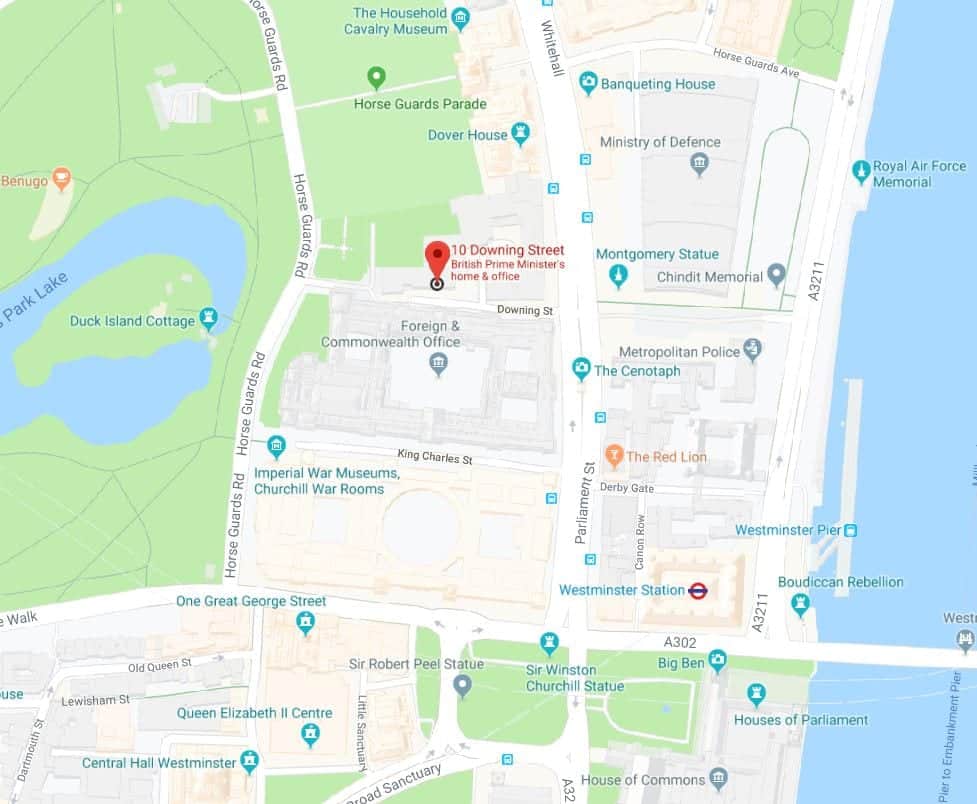
If you need help figuring out which tube to take, make sure to read our posts covering the London Underground and which tube pass you should buy .
You can take bus #11 or a hop-on, hop-off tour bus , both of which pass by frequently.
You can also reach it by boat with City Cruises from the Westminster City Pier which is very nearby.
For obvious safety reasons, the public is not allowed to walk on Downing Street, let alone go into the residence of the Prime Minister (PM).
There have been barriers erected along both sides of Downing Street since the 1920s.
In 1974, it was suggested that permanent barriers should be erected to prevent the public from walking along the street.
However, the Prime Minister at the time, Harold Wilson, overturned the idea.
He felt that it was not right that the public should be prevented from walking down the street and taking photographs outside Number 10.

That has changed, and now security is very tight, as one would expect for the home of a country's head of government.
Today, the closest visitors can get is standing on the edge of the street to peer through the permanent black metal gates.
See below for some tips on how to get the best view of the street and door .
Things to Do Nearby
There are plenty of other significant London sites within walking distance of Downing Street.
- Trafalgar Square
- Changing of the Guard
- Houses of Parliament
- Westminster Abbey
- The Churchill War Rooms
- The Horse Guards
- St. James’s Palace
Find some more ideas, read our post on what to see in Royal London .

Many of these attractions have ticket prices attached to them for entry. Most are included in a number of tourist attraction discount passes available to you in London.
Read our post which compares these city passes to see if any are a good fit for you.
TOURS OF 10 DOWNING STREET
As noted above, you cannot walk on Downing Street as a member of the general public.
But, there are a few ways that you can see what the inside looks like, and also potentially glimpse the PM or cabinet members coming or going.
An Inside Look at 10 Downing Street
This video below made for the 2012 Olympics, gives you a good look into the public rooms inside 10 Downing Street.
Also, take a look at the virtual tour of 10 Downing Street on the UK Government's website.
Lastly, Google made this crystal-clear 360-degree virtual tour of some of the rooms in 10 Downing Street.
Outside 10 Downing Street
Here are some tips on how to get a good glimpse of the famous black door (and perhaps famous people as well).
(1) To get a quick photo-op of 10 Downing Street, you can take the #11 bus, and sit on the top deck of the doubledecker.
You may want to take a video from the bus since a still shot might be hard to capture while the bus is in motion.
(2) You can actually see 10 Downing Street while taking a ride on the London Eye !
(3) Make sure to go to the gates on Whitehall, which is where you will get your best pictures through the heavy security and barriers.
(4) To see any comings and goings of the PM and other government members, Thursday morning is the best time, as this is when the PM and Cabinet meeting.
Also, Wednesdays between 11 and 11:30 a.m. are good since the PM leaves at this time to head to Parliament.
Larry, Chief Mouser to the Cabinet Office
Prime ministers come and go, but one resident of 10 Downing Street has no plans to leave any time soon.
Larry the cat, whose official title is Chief Mouser, has been living at 10 Downing Street since February 2011. He has now seen two PMs come and go.
He may be the most beloved resident of 10 Downing Street in the modern era and his activities are watched closely by the press and the adoring public.
Here he is, on May 24, 2019, being escorted into the residence just minutes before Theresa May stood in front of the famous black door and announced her resignation.
HISTORY OF DOWNING STREET
Downing Street itself was built in the 1680s by Sir George Downing who had purchased a large tract of land near Parliament, on the edge of St. James’s Park .
He originally intended that the street should be full of fine townhouses designed specifically “for persons of good quality to inhabit in...”
When building these houses, Downing was assisted by master architect Sir Christopher Wren, who designed the buildings.
Most were actually built rather cheaply and were not of good quality – still the case when Winston Churchill resided at Number 10 and he is quoted as saying his house was “shaky and lightly built by the profiteering contractor whose name that bear.”
Earls, Lords, and Countesses quickly moved into the prime real estate built here although it seems unlikely that Sir Downing himself ever actually resided on the street that holds his name.
Regardless of this fact, a portrait of him still hangs in the entrance foyer of Number 10 Downing Street.
By the 1800s the houses had nearly all been taken over by the government.
Some of the original buildings were demolished to allow space to build and expand the Privy Council Office, the Board of Trade, and the Treasury Offices.
10 Downing Street
The majority of the UK's Prime Ministers, dating back to the very first, (Robert Walpole in 1720) have called Number 10 home.
The building itself is made up of over 100 hundred rooms – only part of which is actually residential.
There is a private residence on the third floor and a private kitchen in the basement.
Everything in between is offices, conference rooms, reception halls, sitting rooms, dining rooms, etc.
These rooms are all in constant usage - Foreign dignitaries are entertained here and the Prime Minister and his government base the majority of their work at Number 10.
The front door to Number 10 is most likely the most famous feature of the building.
Large, shiny, and black and bearing ‘10’ in large brass numbers, the door is most likely one of the most photographed in the world!
Originally, the door was made of Georgian black oak; it is today made of blast-proof steel and takes a reported eight men to lift it.
The original door can be seen by the public – it is on display in the Churchill Museum at the Cabinet War Rooms .
According to Margaret Thatcher, Number 10 Downing Street is “one of the most precious jewels in the national heritage.”
RELATED POSTS
- Westminster (Royal London) Tour
- London in One Day Tour
- Self-Guided Westminster Tour
Choose a Destination... I want them all PLUS general travel tips. Amsterdam Berlin Boston Charleston Chicago Dubai Lisbon London Los Angeles Miami Nashville New York City New Orleans Paris Philadelphia Prague Rome San Francisco Washington DC
About The Author

North America
United kingdom & ireland, middle east & india, asia & oceania.
The Ultimate Guide to visiting 10 Downing Street
10 downing street ultimate guide.
It has one of the most famous addresses in the world and the most photographed door in England, yet many don’t even bother including 10 Downing Street in their London travel because they can’t even get close to it. But even though you can’t even step inside 10 Downing Street, let alone walk down Downing Street, just snapping a photo of the iconic front black door is a tourist activity in itself.
10 Downing Street is essentially London’s White House, and has been the official address for British prime ministers since 1735. The first residential home which was built on the site of 10 Downing Street was constructed by Sir Thomas Knyvett in 1581; (who was perhaps best known for arresting Guy Fawkes after the gunpowder plot). Some of the many famous political figures who once lived and/or worked at 10 Downing Street include Winston Churchill, Margaret Thatcher, Pitt the Younger, Robert Walpole, Benjamin Disraeli, William Gladstone and David Lloyd George.
Both the first and second world wars were directed from inside 10 Downing Street, and some of the many key decisions related to the British Empire were developed here as well; (such as the building of the British nuclear bomb, the Great Depression, and many more).
10 Downing Street also stretches all the way to 12 Downing Street (because of its interconnected corridors and buildings which make up much of the street), and many important world leaders visit 10 Downing Street throughout the year whenever the British prime minister hosts a reception or charitable event.
10 Downing Street Highlights
10 Downing Street’s front door is said to be the most photographed front door in all of Britain, and can only be seen when looking through the gates from Whitehall; (where you can see the single white stone step and the black steel door with the number “10” on it). The door was originally made of oak, but was replaced with blast-proof material in 1991 after an IRA bomb exploded in the nearby garden.
For those with good eyesight and/or a camera with a good zoom, you should be able to see the front door’s black iron knocker (in the shape of a lion’s head) as well as the brass letter box with the “First Lord of the Treasury” inscription.
The iconic black bricks of the house are also famous (although they are actually yellow underneath). They were blackened by the London smog during the 19th century, and as a result were painted black during the 1960s since people were accustomed to seeing them that way.
Inside 10 Downing Street is a treasure trove of architectural delights that very few people get to see (unless you’re famous, or a royal, of course). Its main staircase is perhaps one of the most famous highlights of the house, as the walls along the staircase are lined with portraits of past British prime ministers.
Special Tips
Getting There
Visiting 10 downing street.
Unfortunately for tourists, 10 Downing Street (as well as the majority of Downing Street itself) is blocked off by a black gate and heavily patrolled by police at all times. (However, visitors can now take a look at the inside of 10 Downing Street by taking a 360-degree virtual tour on 10 Downing Street’s official website).
If you’re lucky enough, you might even be able to see the Prime Minister leaving or entering the residence in his armed car. You’ll know if the prime minister is en route to or from Downing Street because there is normally a flurry of activity with lots of people and police officers standing around (and possibly even some photographers too). But don’t let the flurry of activity deceive you, because the prime minister may be leaving or entering the residence when there is no one around at all!
The closest you can get to 10 Downing Street would be to stand on the edge of the street next to the FCO building (near the Captain James Cook statue) and peer through the black barriers. In your view you should be able to see 10 and 11 Downing Street, as well as a group of armed forces with machine guns standing near the famous black door.
Ticket prices and Opening Hours
Unfortunately for tourists, 10 Downing Street is not open to the public. As a matter of fact, you can’t even walk up to the residence, let alone walk down Downing Street.
However, if you’re hoping to see the prime minister enter or leave the residence, check to see if the gates are open. In that case, you may be able to catch a glimpse of the Prime Minister from far away, or even snap a photo through the high iron gates at the end of Downing Street.
Your best chances of seeing any kind of activity on Downing Street would be on a Thursday morning, which is when the cabinet meets the prime minister every week. The prime minister usually leaves for Parliament between 11 and 11:30 a.m. every Wednesday as well.
Although there’s no telling when the cabinet minister and/or prime minister will enter or leave the building, your chances of spotting them will be higher during weekday mornings, rather than at night, or on the weekends.
If you are checking out Downing Street you might also want to join any of the free tours that are available on offer.
Free Tours in Your Language
- Today's news
- Reviews and deals
- Climate change
- 2024 election
- Fall allergies
- Health news
- Mental health
- Sexual health
- Family health
- So mini ways
- Unapologetically
- Buying guides
Entertainment
- How to Watch
- My watchlist
- Stock market
- Biden economy
- Personal finance
- Stocks: most active
- Stocks: gainers
- Stocks: losers
- Trending tickers
- World indices
- US Treasury bonds
- Top mutual funds
- Highest open interest
- Highest implied volatility
- Currency converter
- Basic materials
- Communication services
- Consumer cyclical
- Consumer defensive
- Financial services
- Industrials
- Real estate
- Mutual funds
- Credit cards
- Balance transfer cards
- Cash back cards
- Rewards cards
- Travel cards
- Online checking
- High-yield savings
- Money market
- Home equity loan
- Personal loans
- Student loans
- Options pit
- Fantasy football
- Pro Pick 'Em
- College Pick 'Em
- Fantasy baseball
- Fantasy hockey
- Fantasy basketball
- Download the app
- Daily fantasy
- Scores and schedules
- GameChannel
- World Baseball Classic
- Premier League
- CONCACAF League
- Champions League
- Motorsports
- Horse racing
- Newsletters
New on Yahoo
- Privacy Dashboard
Barack Obama drops into No10 for surprise visit on his way through London
- Oops! Something went wrong. Please try again later. More content below
Former US president Barack Obama popped into Downing Street on Monday for private talks with Rishi Sunak.
Mr Obama, who served in the White House from 2009 to 2017, smiled and waved at members of the press before he entered No 10 shortly after 3pm.
His visit was understood to be a courtesy call as he was in London.
Mr Obama and Mr Sunak met for around an hour, mostly one-on-one, over cups of tea. They discussed a range of subjects including AI.
Mr Obama left No10, accompanied by the US Ambassador to Britain Jane Hartley.
One broadcaster shouted out: “Why should we care about democracy in Russia?”
The former president responded: “I’m tempted..,” before moving, smiling, towards the car waiting for him.
Mr Obama was due to meet up with long-time friend David Lammy, the shadow Foreign Secretary, and his wife Nicola Green for dinner.
Mr Obama angered some Tories when he warned during the 2016 referendum campaign on Brexit that Britain would be at the “back of the queue ” for a free trade deal if it splintered away from the European Union.
But the then president has proved right with still no sign of a free trade deal between the UK and America, despite leading Brexiteers having argued that such a pact would be easy.
Mr Obama’s visit, which would have come amid tight security, caused an immediate stir in Westminster.
But it was far less surprising than when Bill Clinton, the year after he had left the White House, turned up at Labour’s annual rally in Blackpool in 2002 and popped into the local McDonald’s restaurant.
Local people going in to buy a burger or other food were stunned to see the former US president there.
Mr Clinton posed with staff, as he enjoyed a drink.
He delivered a barn-storming speech at Labour’s annual conference that year, around half way through Tony Blair’s New Labour premiership.
Mr Obama addressed the joint Houses of Parliament during a State Visit to the UK in May 2011 and also flipped burgers with David Cameron during a barbecue in the garden of No10.
He told the hundreds of MPs, peers, staff and journalists gathered in the historic Westminster Hall: “I have known few greater honours than the opportunity to address the Mother of Parliaments at Westminster Hall. I am told that the last three speakers here have been the Pope, Her Majesty the Queen, and Nelson Mandela -- which is either a very high bar or the beginning of a very funny joke.”
He added: “I come here today to reaffirm one of the oldest, one of the strongest alliances the world has ever known. It’s long been said that the United States and the United Kingdom share a special relationship.
“Of course, all relationships have their ups and downs. Admittedly, ours got off on the wrong foot with a small scrape about tea and taxes.
“There may also have been some hurt feelings when the White House was set on fire during the War of 1812. But fortunately, it’s been smooth sailing ever since.”
Mr Obama’s visit, though, comes amid some trans-Atlantic tensions over the Ukraine war and fears that Donald Trump, if he wins another term in the White House, would dramatically scale back support for Kyiv in its fight against Vladimir Putin’s invasion.
Republicans are currently blocking a huge new aid package for Ukraine.
Foreign Secretary Lord Cameron warned US Republicans in mid-February not to show “the weakness displayed against Hitler” as he urged American legislators to pass a bill including the additional support for Ukraine.
His remarks were slammed by some Republicans including Marjorie Taylor Greene who told a broadcaster: “I really don’t care what David Cameron has to say.
“I think that’s rude name-calling and I don’t appreciate that type of language. David Cameron needs to worry about his own country and frankly he can kiss my ass.”
During Mr Obama’s 2011 State visit, his presidential motorcade was fined for not paying the congestion charge.
A £120 penalty was imposed after the US authorities failed to pay the then £10 levy on time.
The US authorities escaped a fine for “The Beast”, the president’s high-security limousine, as the congestion charge cameras were unable to record its number plate as it was travelling slowly, close to other vehicles in Mr Obama’s motorcade.
Only one of the cars in the convoy is understood to have been issued with a fine, which the Americans refused to pay.
The American Embassy at the time defended the refusal by US diplomats to pay the C-charge insisting it was “wholly in accordance” with the 1960 Vienna Convention on Diplomatic Relations, which a spokesman said “prohibits the imposition of this sort of tax on diplomatic missions”.
The US authorities have not paid C-charge fines totalling millions.
Recommended Stories
King charles announces return to public royal duties following his cancer treatment. here's what to know about his health journey..
What to know about King Charles's recent health issues, from an enlarged prostate to a cancer diagnosis.
Should colleges crack down on pro-Palestinian protests?
Universities across the country are taking varying approaches to encampments that have taken root on their campuses, with some allowing them to remain and others calling in police to break them up.
Roger Goodell sees 18-game schedule, Presidents' Day weekend Super Bowl in NFL's future
Fans could finally get their wish and have the day after the Super Bowl be a holiday.
Astros have dug a big hole, Ohtani returns to Toronto & Pete Crow-Armstrong’s first MLB hit
Jake Mintz & Jordan Shusterman talk about the absolute mess of a season from the Houston Astros thus far and where the team has gone wrong, as well as give their good, bad and Uggla from this week & preview this weekend in baseball.
Amazon's 'flattering' tie-front top helps 'hide little tummy pooches' — and you can get it for as low as $20
Over 8,000 shoppers sing the praises of this cute spring top.
Tesla Model 3 Performance and electric Mercedes-Benz G-Class are here | Autoblog Podcast #829
This week we talk about the new Model 3 variant and electric G Wagen, along with other news, plus reviews of the BMW X2 and Mazda CX-90.
Photos show week of antiwar protests at USC, Columbia, Emerson and other schools across U.S.
Protests are currently happening at college campuses around the country as students show support for Palestinians in Gaza.
Despite complaints, Apple hasn't yet removed an obviously fake app pretending to be RockAuto
The latest example comes from RockAuto, an auto parts dealer popular with home mechanics and other DIYers, which is upset that a fake app masquerading as its official app has not been removed from the App Store, despite numerous complaints to Apple. RockAuto co-founder and president Jim Taylor was first alerted to the situation when customers began complaining about "annoying ads" in its app -- something he said "surprised us since we don't have an app."
Protect yourself from baking burns with the oven rack shields shoppers call 'real wrist-savers' — now 30% off
Burnt cookies are one thing, but your arms? No more!
OpenAI Startup Fund quietly raises $15M
The OpenAI Startup Fund, a venture fund related to -- but technically separate from -- OpenAI that invests in early-stage, typically AI-related companies across education, law and the sciences, has quietly closed a $15 million tranche. According to a filing with the U.S. Securities and Exchange Commission, two unnamed investors contributed the $15 million in new cash on or around April 19. The paperwork was submitted on April 25, and mentions Ian Hathaway, the OpenAI Startup Fund's manager and sole partner.
Formula 1: Nico Hulkenberg leaving Haas for Sauber in 2025
Hulkenberg has started over 200 Formula 1 races and has never had a podium finish.
Area man, Twilio co-founder Jeff Lawson, buys The Onion
Jeff Lawson, the co-founder and recently departed CEO of enterprise infrastructure software company Twilio, is the proud new owner of satirical online newspaper The Onion. "Alright, the news is out — yes, I bought The Onion," Lawson wrote in a LinkedIn post late Thursday, after it first emerged in The New York Times Thursday. The Onion, regarded by many as "America's finest news source," is a digital media institution, serving satire by the spoonful for more than three decades, first as a weekly print edition starting in 1988, then as an online outlet from 1996 with the physical publication ceasing in 2013.
Fantasy Baseball Waiver Wire: Widely available players ready to help your squad
Andy Behrens has a fresh batch of priority pickups for fantasy managers looking to close out the week in strong fashion.
Trump trial live updates: Prosecution calls more witnesses to establish Trump ties with Stormy Daniels, Karen McDougal
The former president’s criminal hush money is set to resume in Manhattan Friday when former National Enquirer publisher David Pecker returns to the witness stand to face cross-examination by the defense.
Engadget Podcast: Why TikTok will never be the same again
Biden passed the TikTok divestment bill -- now what?
Meta's AI spending tests Facebook's growth-first playbook
Zuckerberg's track record of making money only after achieving a kind of critical mass is a harder sell for AI.
NFL Draft round 1 reactions: Penix, McCarthy, Worthy, Raiders | Zero Blitz
Jason Fitz is joined by Senior NFL Reporter Charles Robinson and former NFL running back Damien Harris to give their initial thoughts and takeaways from a wild first night of the 2024 NFL Draft. The trio dive into a few standout selections, including plenty of time analyzing what the Atlanta Falcons could possibly be thinking by taking Michael Penix Jr, J.J. McCarthy and Drake Maye and their respective fits with the Minnesota Vikings and New England Patriots, why Tennessee Titans fans should be ecstatic about the J.C. Latham pick, Xavier Worthy's instant impact potential with the Kansas City Chiefs and why the Las Vegas Raiders took a tight end in the first round two years in a row.
Alphabet market cap tops $2 trillion after earnings beat, dividend announcement
Alphabet reported Q1 earnings on Thursday that beat estimates. The company also announced its first-ever dividend.
NFL Draft: 'All-in' Cowboys trade down with Lions, select Oklahoma OT Tyler Guyton
The Cowboys will now select No. 29 in the first round instead of 24th.
NFL Draft fashion: Caleb Williams, Malik Nabers dressed to impress, but Marvin Harrison Jr.'s medallion stole the show
Every player was dressed to impress at the 2024 NFL Draft.
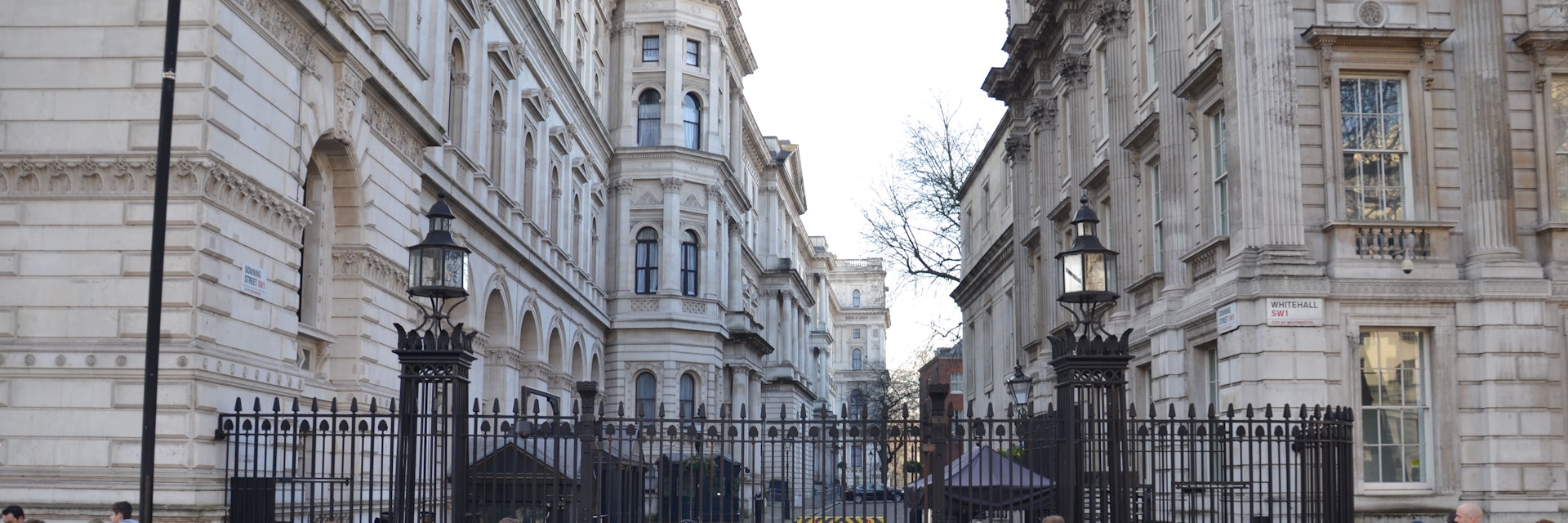
No 10 Downing Street
The West End
The official office of British leaders since 1735, when King George II presented No 10 to 'First Lord of the Treasury' Robert Walpole, this has also been the prime minister’s London residence since the late 19th century. For such a famous address, No 10 is a small-looking Georgian building on a plain-looking street, hardly warranting comparison with the White House, for example. Yet it is actually three houses joined into one and boasts roughly 100 rooms plus a 2000-sq-metre garden.
The street was cordoned off with a large gate during Prime Minister Margaret Thatcher’s time, so you won’t see much. After an IRA mortar attack in 1991, the stout wooden door was replaced with a blast-proof steel version (which cannot be opened from the outside).
Unsurprisingly, you'll find that access to Downing St is restricted unless you're a head of state, but a few lucky souls who get drawn in the ballot can take a peek inside during Open House London and Open Garden Squares Weekend (www.opensquares.org).
10 Downing St. SW1
Get In Touch
https://www.number10.gov.uk
Lonely Planet's must-see attractions
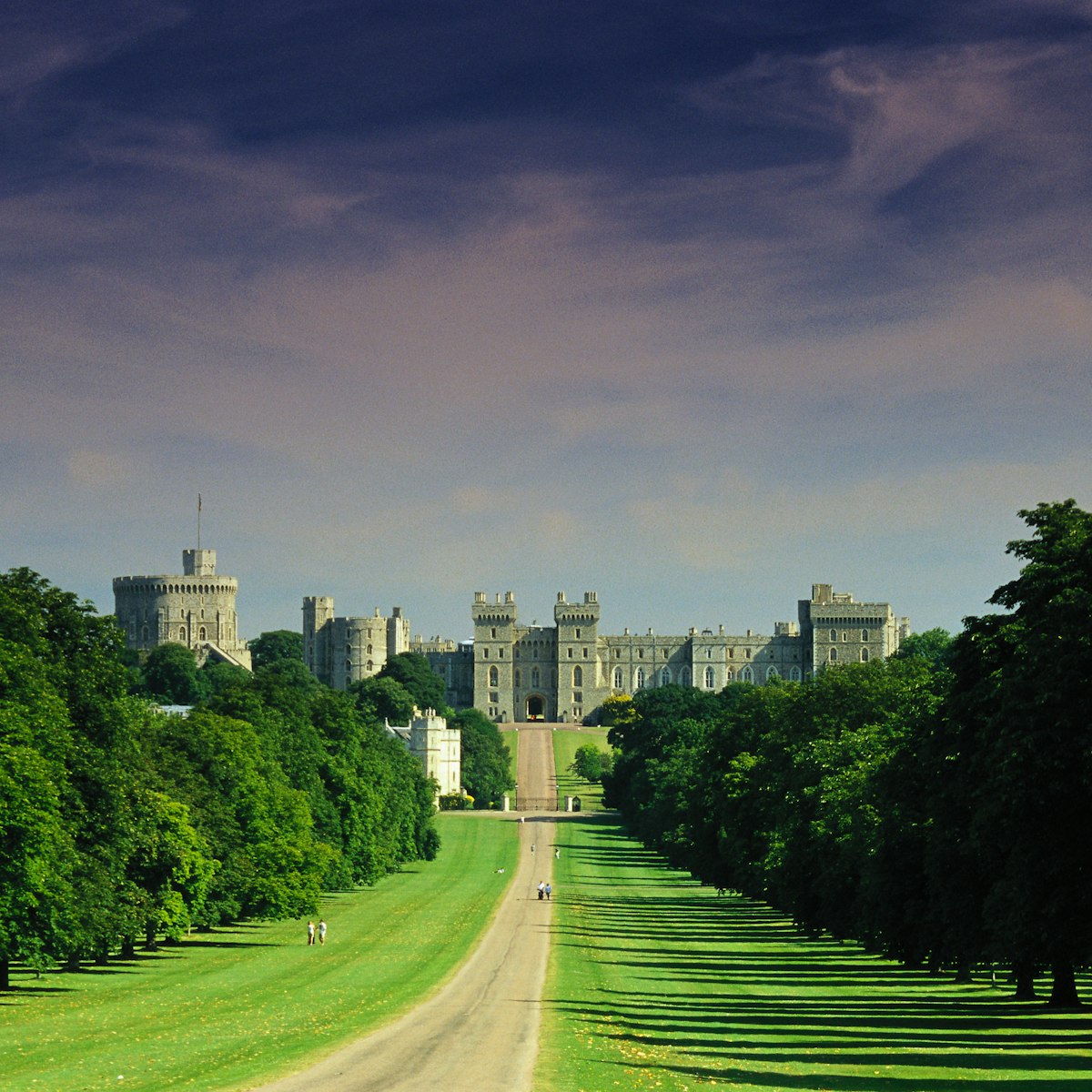
Windsor Castle
20.62 MILES
The world’s largest and oldest continuously occupied fortress, Windsor Castle is a majestic vision of battlements and towers. Used for state occasions, it…
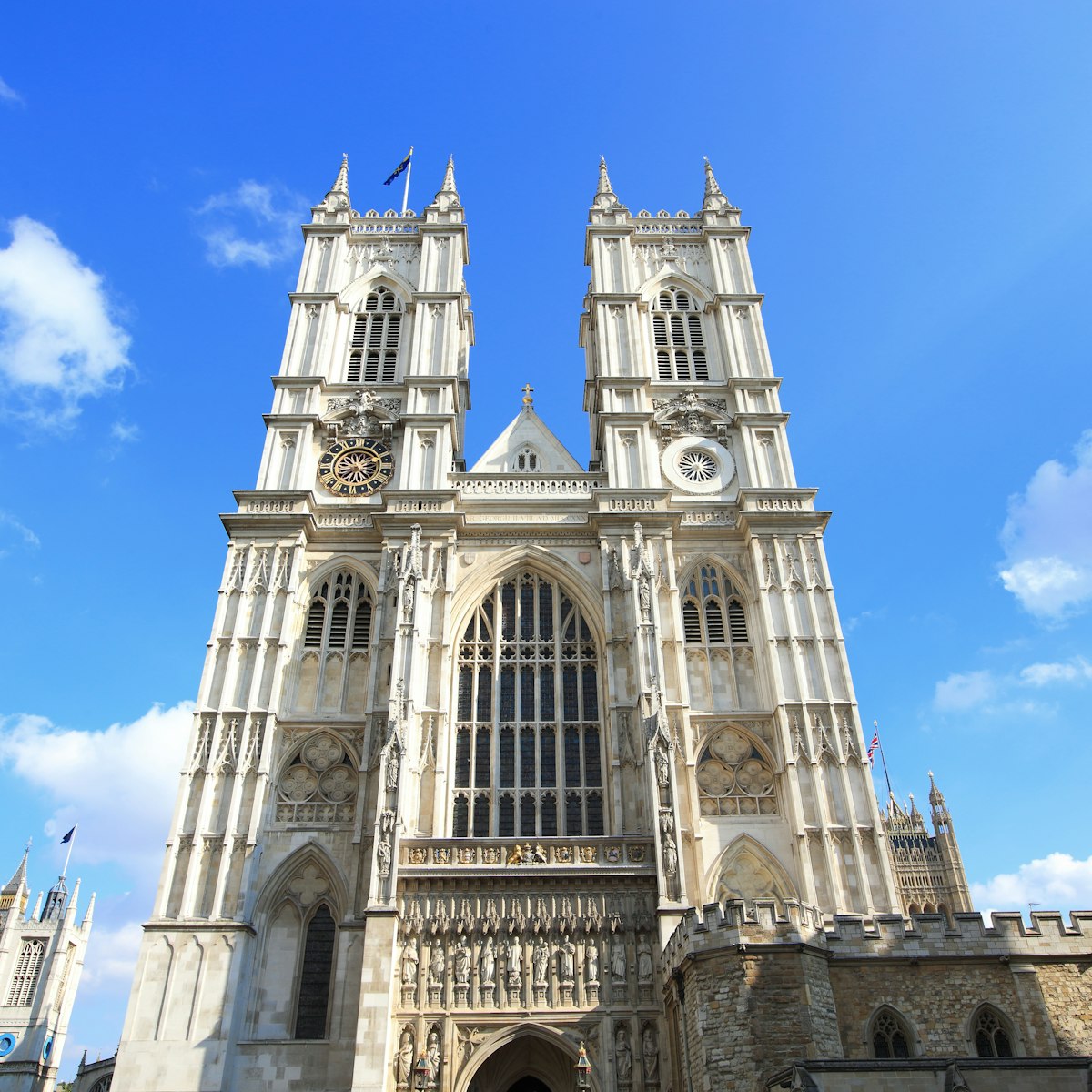
Westminster Abbey
A splendid mixture of architectural styles, Westminster Abbey is considered the finest example of Early English Gothic. It's not merely a beautiful place…
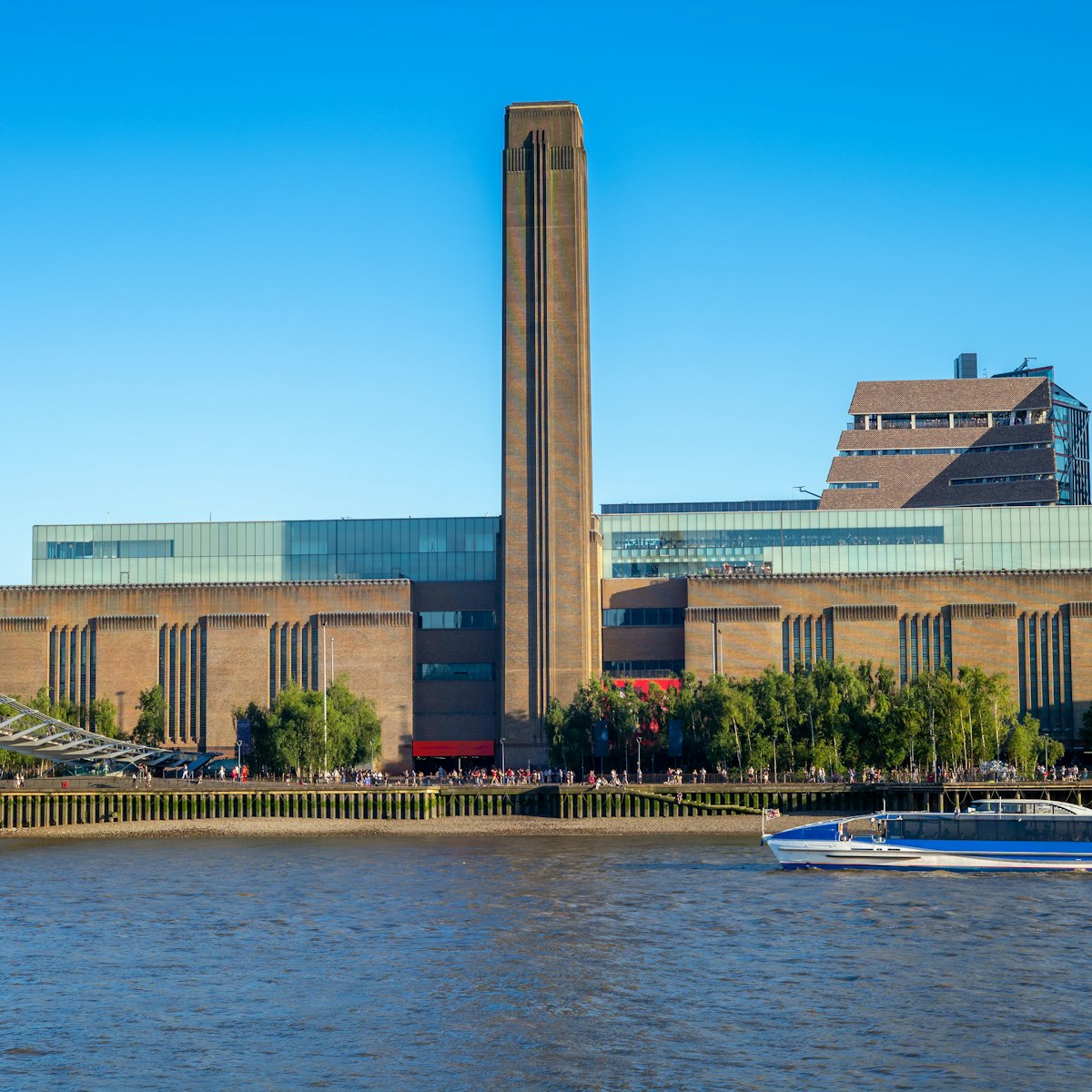
Tate Modern
One of London's most amazing attractions, Tate Modern is an outstanding modern- and contemporary-art gallery housed in the creatively revamped Bankside…
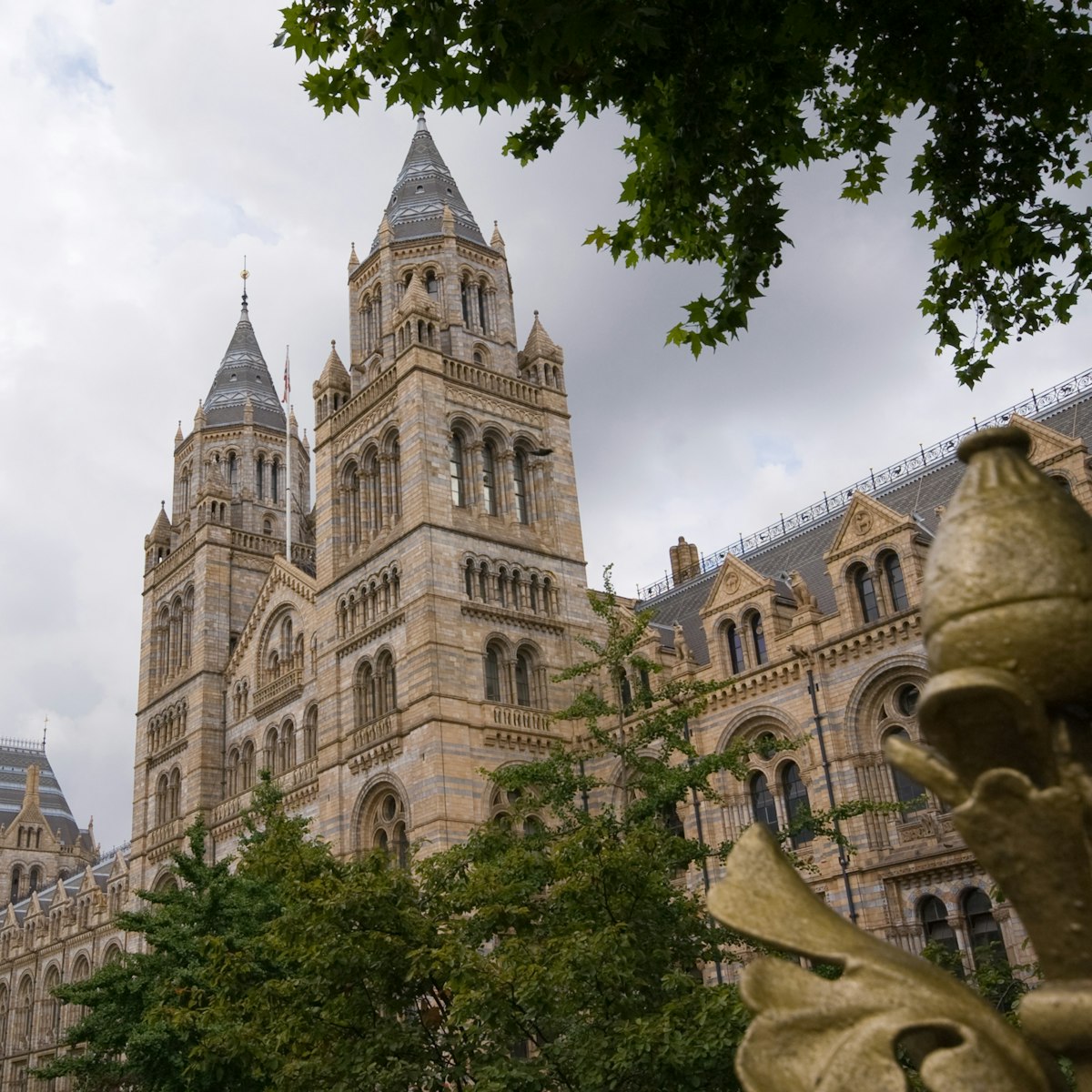
Natural History Museum
With its thunderous, animatronic dinosaur, riveting displays about planet earth, outstanding Darwin Centre and architecture straight from a Gothic fairy…
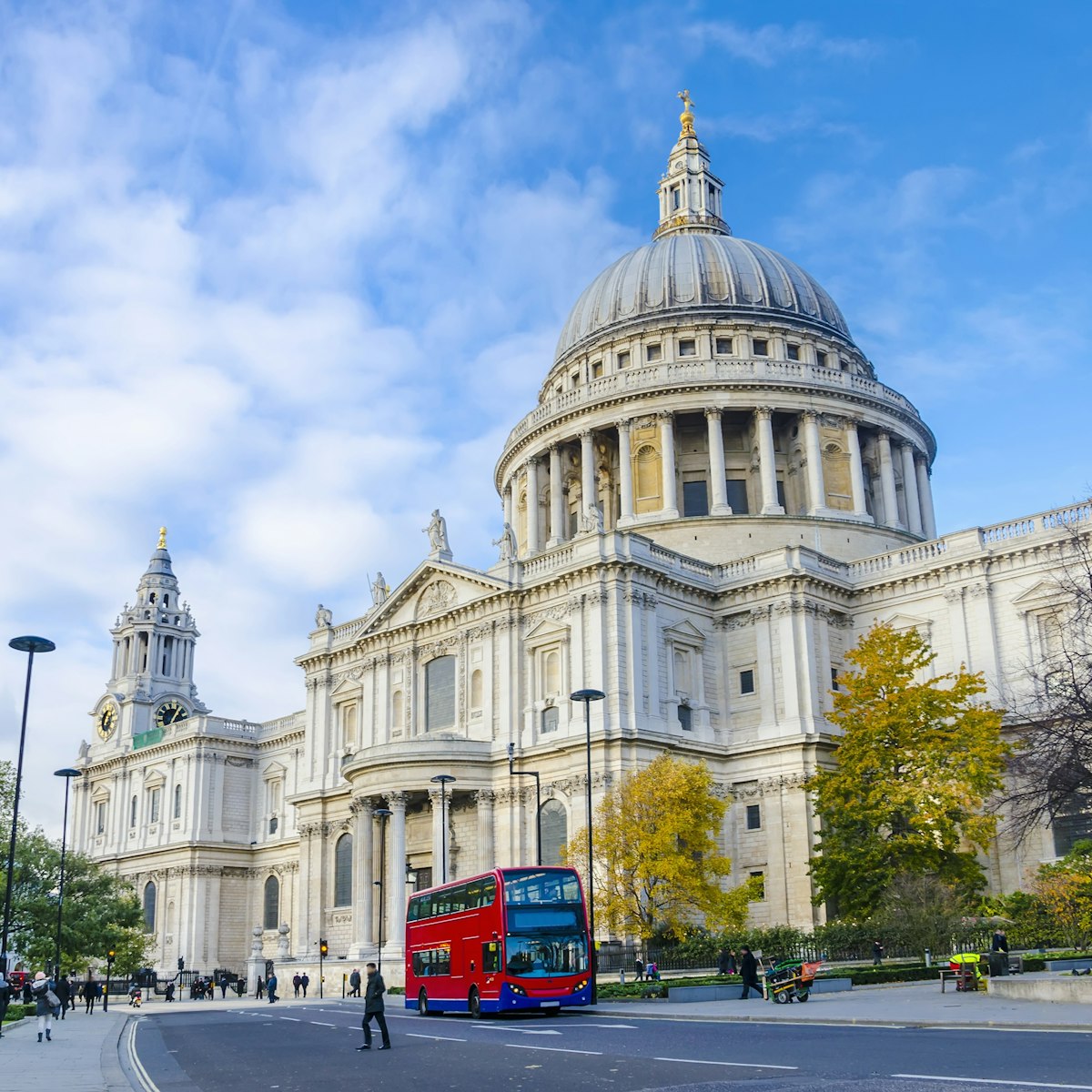
St Paul's Cathedral
Sir Christopher Wren’s 300-year-old architectural masterpiece is a London icon. Towering over diminutive Ludgate Hill in a superb position that's been a…
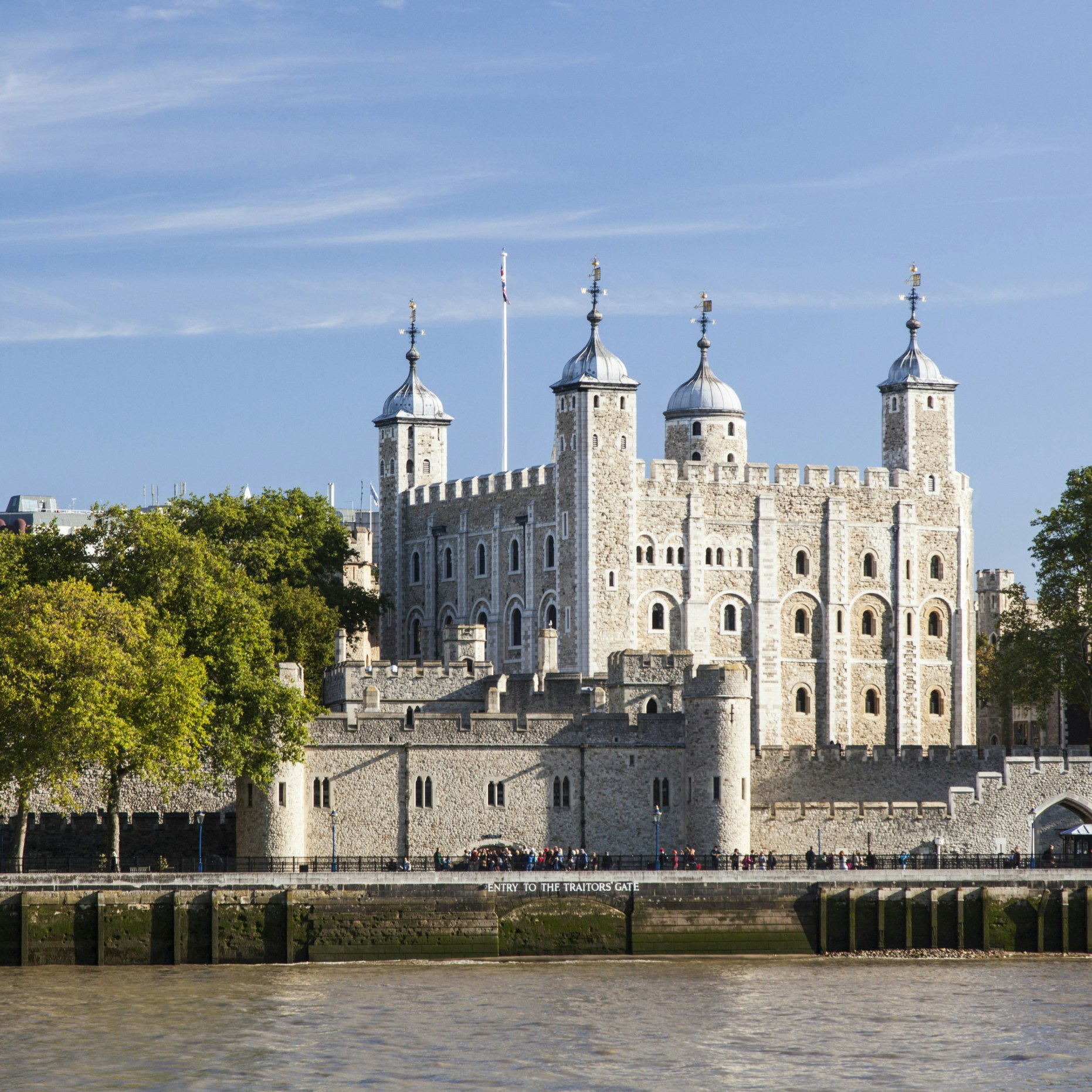
Tower of London
Few parts of the UK are as steeped in history or as impregnated with legend and superstition as the titanic stonework of the Tower of London. Not only is…
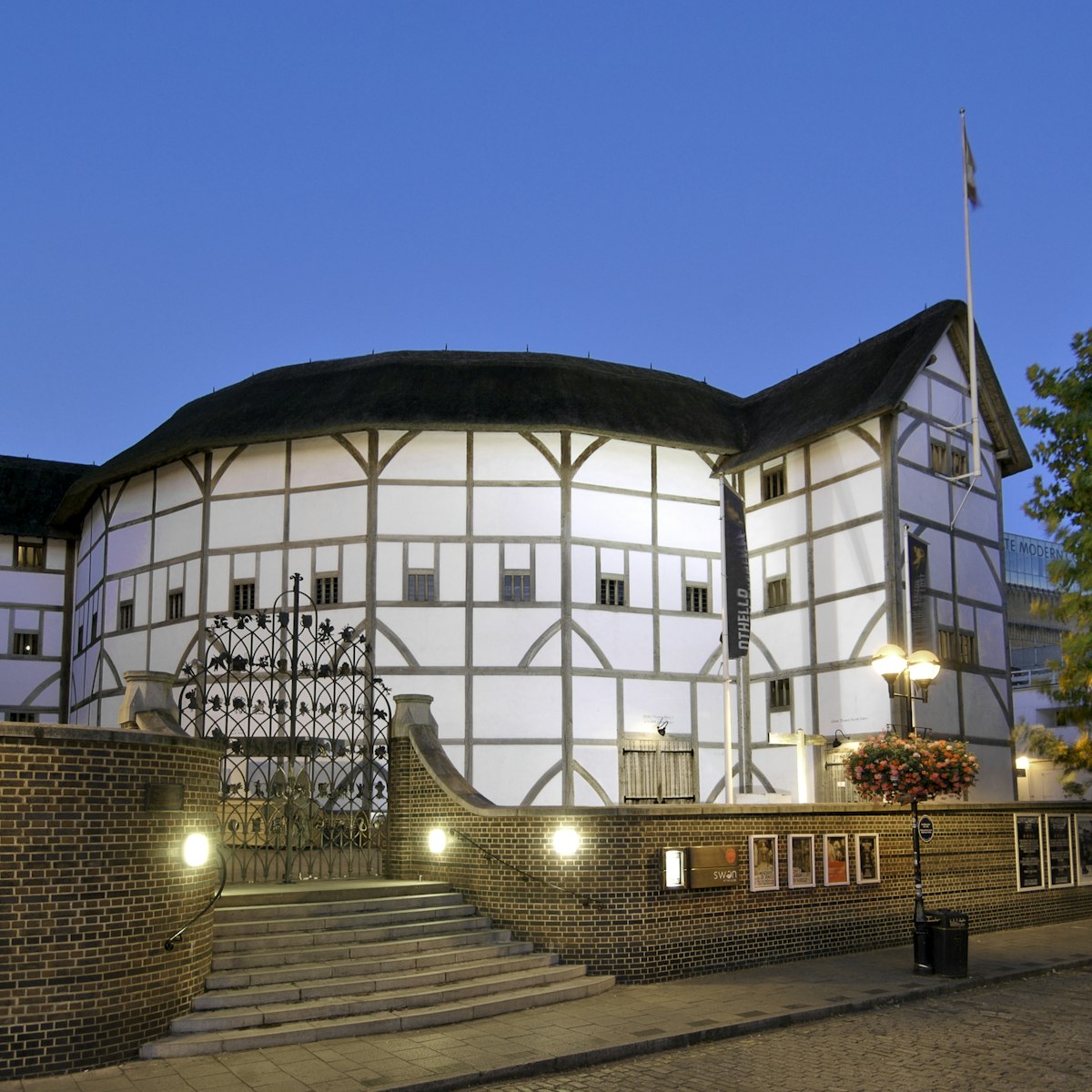
Shakespeare's Globe
Seeing a play at Shakespeare's Globe – ideally standing under the open-air "wooden O" – is experiencing the playwright's work at its best and most…
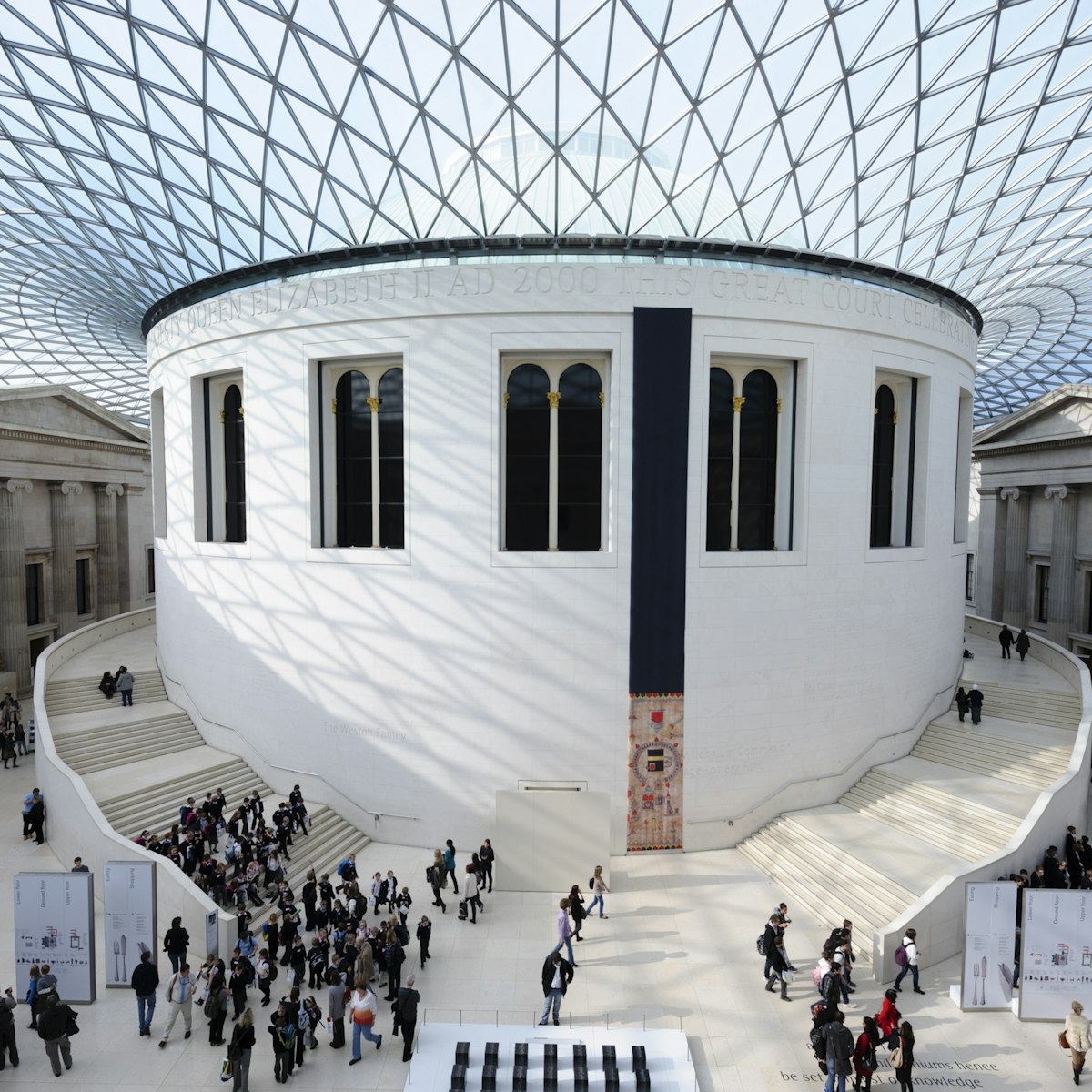
British Museum
With almost six million visitors trooping through its doors annually, the British Museum in Bloomsbury, one of the oldest and finest museums in the world,…
Nearby The West End attractions
1 . Horse Guards Parade
In a more accessible version of Buckingham Palace’s Changing the Guard, the horse-mounted troops of the Household Cavalry swap soldiers here at 11am from…
2 . The Cenotaph
The Cenotaph, completed in 1920 by Edwin Lutyens and fashioned from Portland stone, is Britain’s most important memorial to the men and women of Britain…
3 . Banqueting House
Banqueting House is the sole surviving section of the Tudor Whitehall Palace (1532) that once stretched most of the way down Whitehall before burning to…
4 . Churchill War Rooms
Former Prime Minister Winston Churchill helped coordinate the Allied resistance against Nazi Germany on a Bakelite telephone from this underground complex…
5 . Household Cavalry Museum
This small museum looks at the roles and work of the two regiments of the Queen's Household Cavalry, the Life Guard and the Blues & Royals. The tour is by…
6 . New Scotland Yard Building
The London Metropolitan Police has moved several times since its founding in 1829 but the latest move – to this renovated neoclassical block with a modern…
7 . Admiralty Citadel
The ivy-covered concrete Admiralty Citadel is a heavily fortified, bomb-proof command and control fortress built for the Royal Navy in 1941 to prepare for…
8 . National Police Memorial
In the northeast corner of St James's Park, at the junction of Horse Guards Rd and the Mall, stands this memorial, one column of marble and another of…
Please enable Javascript!

Sign Up Today
Start your 14 day free trial today

The History Hit Miscellany of Facts, Figures and Fascinating Finds
10 Downing Street
London, England, United Kingdom

Lily Johnson
01 jan 2021.
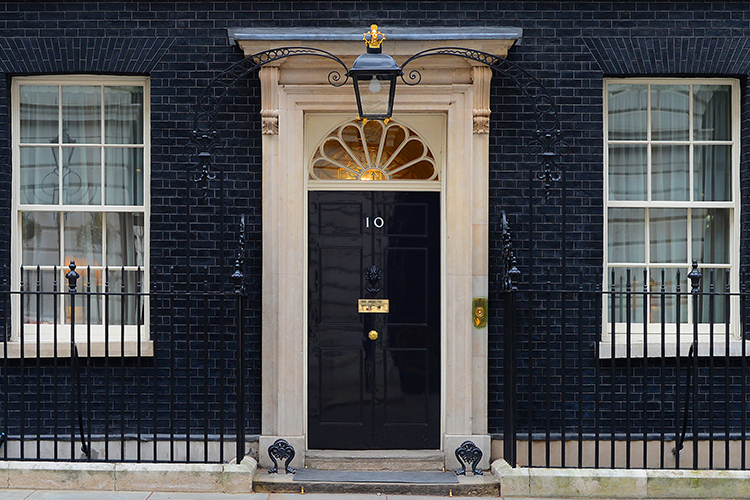
About 10 Downing Street
10 Downing Street in London is the traditional residence of the British Prime Minister, and in its 300-year-old history has witnessed some of the country’s most important political decisions. From Winston Churchill to Margaret Thatcher , a host of Britain’s leaders have walked through its iconic black door, and today it is considered one of the most recognisable buildings in the country.
10 Downing Street history
In 1732, Britain’s first Prime Minister Sir Robert Walpole was offered 10 Downing Street as a residence by George II, when it then consisted of 3 separate buildings. Walpole and architect William Kent converted these 3 buildings into a single large one, known collectively by its now-famous address and connected to each other by the Treasury Passage.
Despite its current fame, 10 Downing Street was not a popular choice of residence for Britain’s early Prime Ministers however, and even risked being demolished many times. The 20th century saw its revival when Arthur James Balfour established it as his official residence as Prime Minister in 1902, having already been living there as First Lord of the Treasury.
Since that time, 10 Downing Street has been the location from which Prime Ministers have run the country and entertained heads of state and governments from around the world. 10 Downing Street’s black door hides a warren of offices and state rooms as well as numerous conference rooms, dining rooms, private apartments, kitchens and cellars.
The fates of the First and Second World Wars have been discussed inside, as well as decisions regarding the British Empire, the building of the nuclear bomb, and the creation of the welfare state.
10 Downing Street today
Today 10 Downing Street remains the residence of Britain’s Prime Minister and thus a working governmental building. Though it is not possible to tour 10 Downing Street’s interior, except of course by invitation, the official website has a virtual tour and several audio files detailing the building’s history and that of its residents.
The site’s exterior can be also be seen from its imposing black gates at the end of the street, with tourists often flocking there to snap a photograph of its iconic entrance, thought to be the most photographed door in the country!
In the heart of London, the nearby area also features some of the city’s most-visited sites, with the Houses of Parliament and Westminster Abbey just a 10-minute walk away.
Getting to 10 Downing Street
10 Downing Street is located in Westminster, and can be viewed by the public from the gates on Whitehall. The nearest tube station is Westminster, an 8-minute walk away, while the nearest train station is Charing Cross Station, a 10-minute walk away. A number of bus routes operate to the area, with the nearest stop the Banqueting House or Parliament Square stop, both around a 1-minute walk away.
Featured In
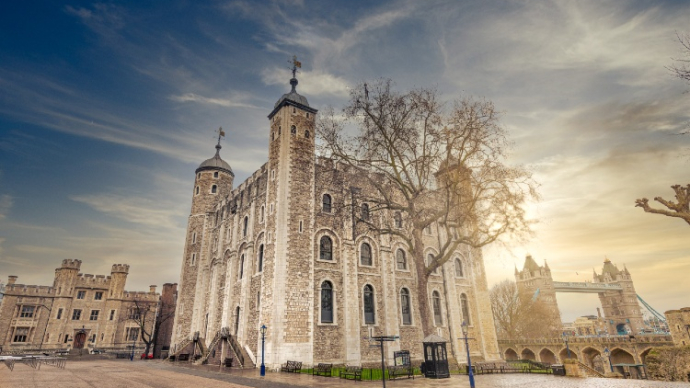
London Historic Sites
Londinium, The Big Smoke, The Great Wen: London has experienced its fair share of change over its 2000-year history. Here's our pick of some of the British capital's most famous historic sites to visit today.

Related Articles
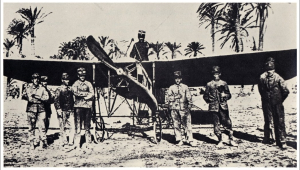
How Carlo Piazza’s Flight Changed Warfare Forever.
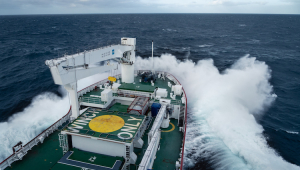
How Shackleton Picked his Crew
Watch and listen.
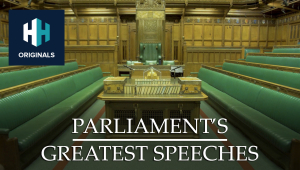
Parliament’s Greatest Speeches

By The Winter Sea
You may also like.
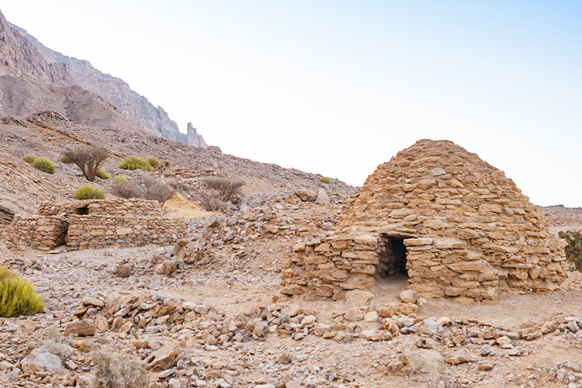
The 10 Best Bronze Age Sites to Visit in the World
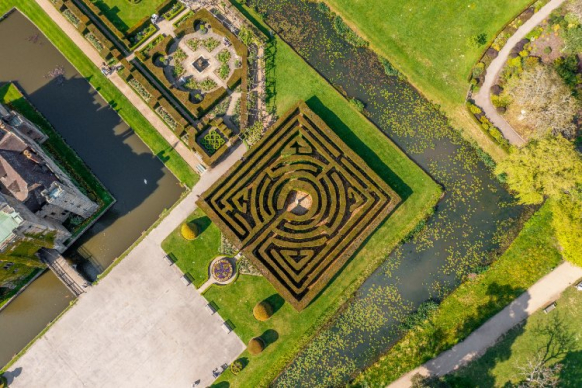
5 Historic Mazes to Explore in England
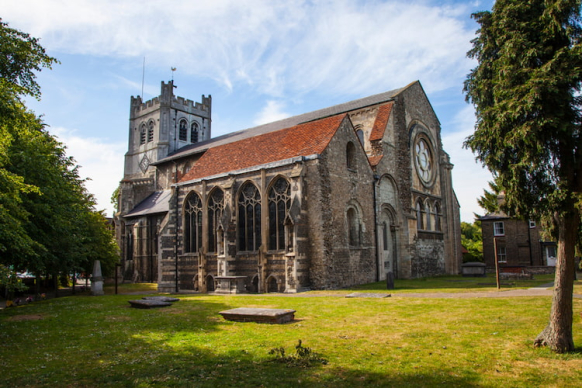
Explore the Key Sites of Henry VIII’s Life and Reign
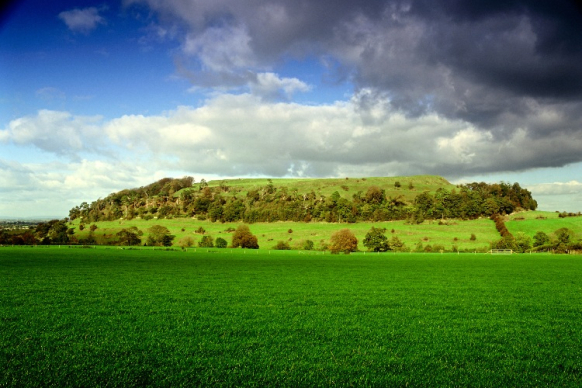
5 of the Best Hillforts in England
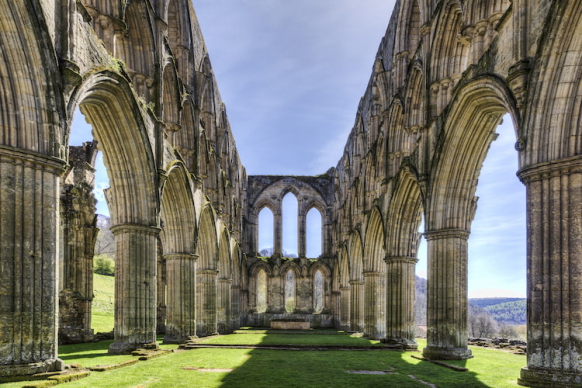
10 British Churches Ruined During the Dissolution of the Monasteries
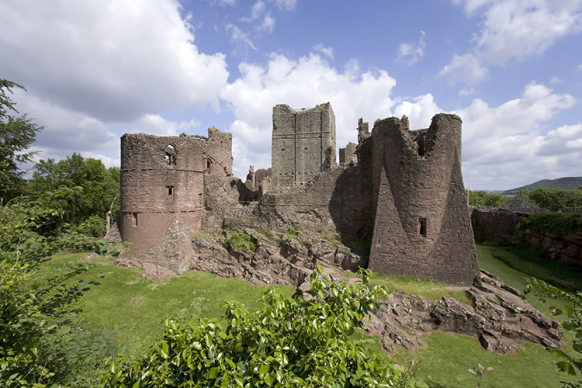
The Best English Civil War Sites and Battlefields
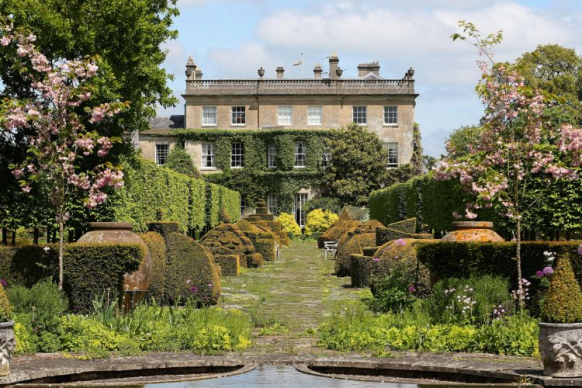
11 British Royal Residences
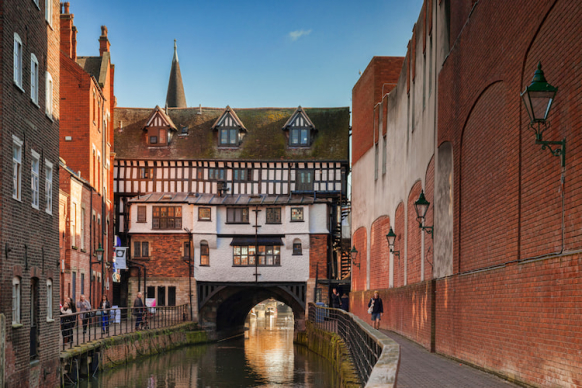
10 Must-See Medieval Landmarks in England
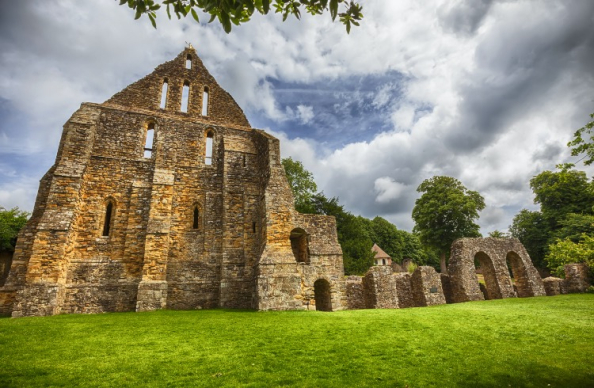
10 of the Best Norman Sites in Britain
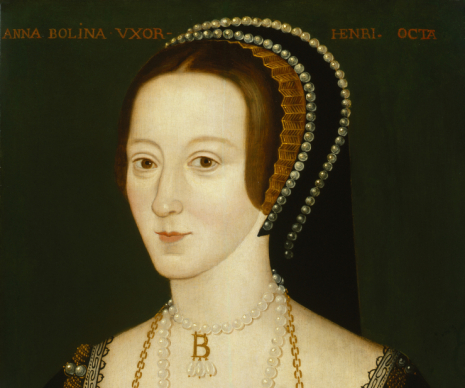
10 Historic Sites Associated with Anne Boleyn
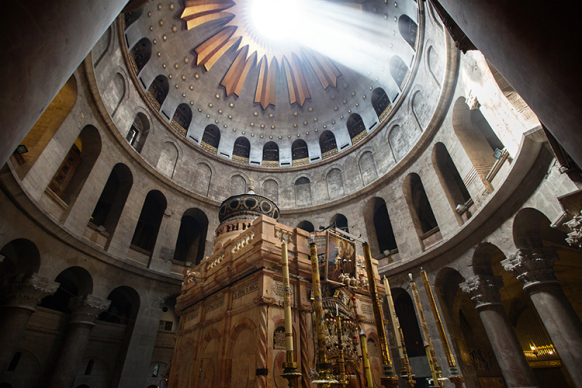
10 Key Crusader Ruins and Monuments
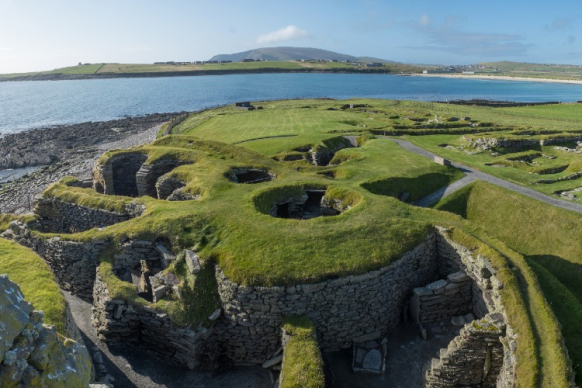
Viking Sites in Scotland: 5 Areas with Nordic History
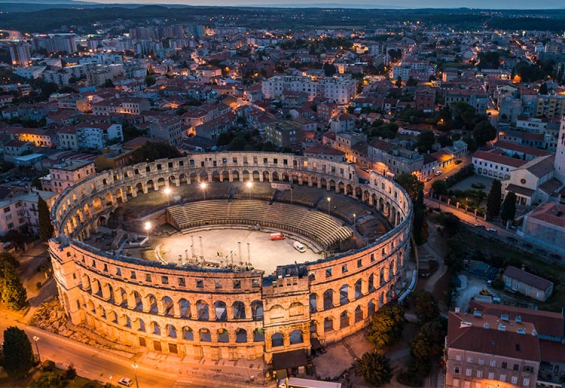
10 Historic Sites You Should Not Miss in 2023
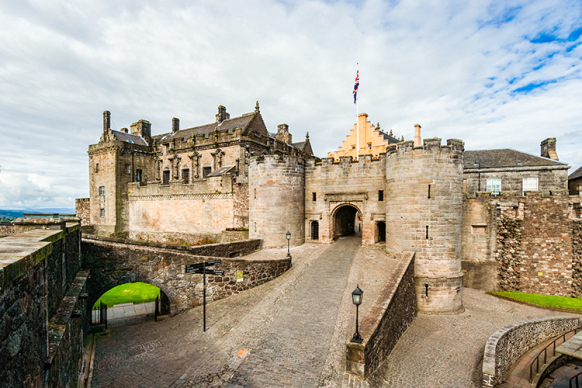
Historic Sites Associated with Mary Queen of Scots
Cookies on GOV.UK
We use some essential cookies to make this website work.
We’d like to set additional cookies to understand how you use GOV.UK, remember your settings and improve government services.
We also use cookies set by other sites to help us deliver content from their services.
You have accepted additional cookies. You can change your cookie settings at any time.
You have rejected additional cookies. You can change your cookie settings at any time.
- History of the UK Government
10 Downing Street
Introduction – by sir anthony seldon.
10 Downing Street, the locale of British prime ministers since 1735, vies with the White House as being the most important political building anywhere in the world in the modern era. Behind its black door have been taken the most important decisions affecting Britain for the last 275 years.
In the 20th century alone, the First and Second World Wars were directed from within it, as were the key decisions about the end of the empire, the building of the British nuclear bomb, the handling of economic crises from the Great Depression in 1929 to the great recession, and the building up of the welfare state.
Some of the most famous political figures of modern history have lived and worked in Number 10, including Robert Walpole, Pitt the Younger, Benjamin Disraeli, William Gladstone, David Lloyd George, Winston Churchill and Margaret Thatcher.
Number 10 has 3 overlapping functions. It is the official residence of the British Prime Minister: it is their office, and it is also the place where the Prime Minister has entertained guests from Her Late Majesty Queen Elizabeth II to presidents of the United States and other world leaders. The Prime Minister hosts countless receptions and events for a whole range of British and overseas guests, with charitable receptions high up the list.
The building is much larger than it appears from its frontage. The hall with the chequered floor immediately behind the front door lets on to a warren of rooms and staircases. The house in Downing Street was joined to a more spacious and elegant building behind it in the early 18th century. Number 10 has also spread itself out to the left of the front door, and has taken over much of 12 Downing Street, which is accessed by a corridor that runs through 11 Downing Street – the official residence of the Chancellor of the Exchequer.
Explore 10 Downing Street
Take a virtual tour inside 10 Downing Street and explore it’s most famous rooms and significant events at the Google Cultural Institute .
Origins and early inhabitants
The area around Downing Street was home to ancient Roman, Anglo-Saxon and Norman settlements, and was already a prestigious centre of government 1,000 years ago.
The Romans first came to Britain under the command of Julius Caesar in 55 BC. Making their capital at Londinium downriver, the Romans chose Thorney Island – a marshy piece of land lying between two branches of the river Tyburn that flowed from Hampstead Heath to the Thames – as the site for their early settlement.
These Roman settlements, and those of the Anglo-Saxons and Normans who supplanted them, were not very successful. The area was prone to plague and its inhabitants were very poor. A charter granted by the Mercian King Offa in the year 785 refers to “the terrible place called Thorney Island”. It took royal patronage to give the area prestige. King Canute (reigned 1017 to 1035) built a palace in the area, and Edward the Confessor (reigned 1042 to 1066) and William the Conqueror (reigned 1066 to 1087) maintained a royal presence there. The position of Westminster (as the area became known) as the centre of government and the church was solidified following the construction of the great abbey nearby, on Edward's orders.
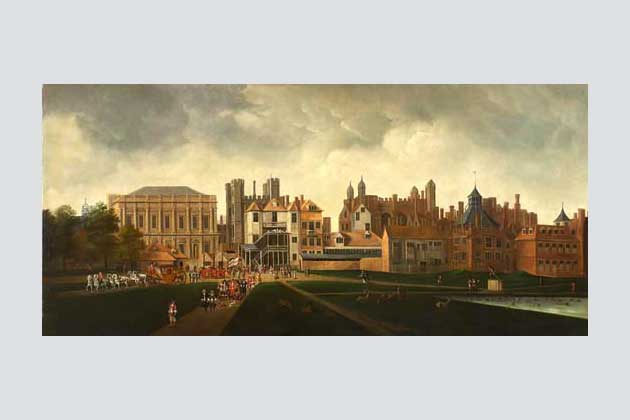
Whitehall from St James’s Park – Hendrick Danckerts c.1675
The earliest building known to have stood on the site of Downing Street was the Axe brewery owned by the Abbey of Abingdon in the Middle Ages. By the early 1500s, it had fallen into disuse.
Henry VIII (reigned 1509 to 1547) developed Westminster's importance further by building an extravagant royal residence there.
Whitehall Palace was created when Henry VIII confiscated York House from Cardinal Wolsey in 1530 and extended the complex. Today's Downing Street is located on the edge of the Palace site.
The huge residence included tennis courts, a tiltyard for jousting, a bowling green, and a cockpit for bird fights. Stretching from St James's Park to the Thames, it was the official residence of Tudor and Stuart monarchs until it was destroyed by fire in 1698. It made the surrounding real estate some of the most important and valuable in London – and the natural home of power.
The first domestic house known to have been built on the site of Number 10 was a large building leased to Sir Thomas Knyvet in 1581 by Queen Elizabeth I (reigned 1558 to 1603). He was one of the Queen's favourites and was an MP for Thetford as well as a justice of the peace for Westminster. His claim to fame was the arrest of Guy Fawkes for his role in the gunpowder plot of 1605. He was knighted in 1604 by Elizabeth's successor, King James I (reigned 1603 to 1625), and the house was extended.
After the death of Sir Knyvet and his wife, the house passed to their niece, Elizabeth Hampden, who continued to live there for the next 40 years.
The middle of the 17th century was a period of political upheaval and Mrs Hampden's family was right in the middle of it. Her son, John Hampden, was one of the MPs who opposed King Charles I (reigned 1625 to 1649), and Oliver Cromwell, the Lord Protector, was Mrs Hampden's nephew.
Hampden House, as it was then known, gave Mrs Hampden a prime view of the tumultuous events during the Civil War and the Commonwealth and the early years of the Restoration.
The execution of Charles I in 1649 took place on a scaffold in front of Banqueting House in Whitehall, within earshot of the house. Mrs Hampden was still living there when King Charles II (reigned in Scotland from 1649 to 1685) was restored to the English throne in 1660.
The Parliamentary Commissioners, who took over Crown lands during the time of the Commonwealth, described the house in 1650:
Built part of Bricke and part with Tymber and Flemish qalle and covered with Tyle, consistinge of a Large and spacious hall, wainscoted round, well lighted, and Paved with brick Pavements, two parls wherof one is Wainscoted round from the seelinge to ye floor, one Buttery, one seller, one Large kitchen well paved with stone and well fitted and Joynted and well fitted with dresser boards. And above stayres in the first story one large and spacious dyneinge Roome, Wainscoted round from the seelinge to the floore, well flored, Lighted and seeled, and fitted with a faire Chimney with a foote pace of paynted Tyle in the same. Also 6 more Roomes and 3 Closetts in the same flore all well lighted and seeled. And in the second story 4 garretts…
The emergence of Downing Street
George Downing gave his name to the most famous street in the world. It is unfortunate that he was such an unpleasant man. Able as a diplomat and a government administrator, he was miserly and at times brutal.
However, George Downing was responsible for the street, its name and the building we know today. A former diplomat at The Hague serving the Commonwealth, he changed allegiance with finesse. He traded enough secrets to gain a royal pardon in March 1660 and, by the Restoration in May 1660, to be rewarded with a knighthood.
Interested in power and money, he saw an opportunity to make his fortune in property. He had already gained the Crown interest in the land around Hampden House, but could not take possession as it was under lease to Knyvet's descendants. In 1682 he secured the leases to the property and employed Sir Christopher Wren to design the houses.
Between 1682 and 1684, existing properties were pulled down and in their place a cul-de-sac of 15 to 20 terraced houses was built along the north side of the new street, Downing Street. In order to maximise profit, the houses were cheaply built, with poor foundations for the boggy ground. Instead of neat brick façades, they had mortar lines drawn on to give the appearance of evenly spaced bricks. In the 20th Century, Prime Minister Winston Churchill wrote that Number 10 was:
Shaky and lightly built by the profiteering contractor whose name they bear.
A rather important neighbour complained, however. The new houses were built directly behind a large and impressive house overlooking Horse Guards. Its occupier, the Countess of Lichfield, daughter of Charles II, was less than pleased with the emergence of the unwelcome terrace behind. She complained to her father, who wrote back with advice:
I think that it is a very reasonable thing that other houses should not look into your house without your permission, and this note will be sufficient for Mr Surveyor to build up your wall as high as you please.
The original numbering of the Downing Street houses was completely different from what we see today. The sequence of numbers was haphazard, and the houses tended to be known by the name or title of their occupants. The current Number 10 started out life as Number 5, and was not renumbered until 1779.
The Downing Street house had several distinguished residents. The Countess of Yarmouth lived at Number 10 between 1688 and 1689, and was followed by Lord Lansdowne from 1692 to 1696 and the Earl of Grantham from 1699 to 1703. The last private resident of Downing's terrace was one Mr Chicken. Little is known about him except that he moved out in the early 1730s.
King George II presented both the house on Downing Street and the house overlooking Horse Guards to Sir Robert Walpole, who held the title First Lord of the Treasury and effectively served as the first Prime Minister. Walpole refused the property as a personal gift. Instead, he asked the king to make it available as an official residence to him and to future First Lords of the Treasury – starting the tradition that continues today. The brass letterbox on the black front door is still engraved with this title.
Walpole took up residence on 22 September 1735, once the townhouse on Downing Street and the house overlooking Horse Guards had been joined together and completely refurbished. Walpole employed architect William Kent – who had already worked on Walpole's Norfolk home, Houghton Hall – to undertake the work.
Kent carried out extensive work on the 2 houses, connecting them on 2 storeys. The main entrance now faced onto Downing Street rather than towards Horse Guards, and the Downing Street building became a passageway to the main house. At the back of the house, where the Walpoles lived, Kent created grand new rooms suitable for receiving important guests, and built an unusual, 3-sided staircase. It is still one of the most impressive features of the building.
Walpole used the ground floor for business, taking the largest room, on the north-west side of the house, as his study. This is now the Cabinet Room. Upstairs on the first floor, the Walpoles lived in the rooms facing onto Horse Guards Parade. Lady Walpole used today's White Drawing Room as her sitting room, and the present day Terracotta Room served as their dining room. The Walpoles were soon entertaining important guests in their smart house, including George II's wife Queen Caroline, politicians, writers and soldiers. Number 10 became – as it continues to be today – a place for politics and entertainment.
Pelham to Pitt
When Walpole left Downing Street in 1742, it was over 20 years before another First Lord of the Treasury moved in. His successors saw the house as a perk of the job, and Prime Ministers Henry Pelham (1743 to 1754) and the Duke of Newcastle (1757 to 1762) preferred to live in their own residences.
In 1763 George Grenville (1763 to 1765) took up residence but was sacked by King George III in 1765 for imposing stamp duty on the American colonies. The next Prime Minister to move into Downing Street was Lord North (1770 to 1782). He was very fond of the house and often entertained there. Visitors included the writer Samuel Johnson and Thomas Hansard, founder of the parliamentary reporting system that is still in use today. One guest, Clive of India, was so popular that furniture was made for him, which is still present today in the first floor anteroom and Terracotta Room.
During one memorable dinner party held by Lord North on 7 June 1780, civil unrest broke out in the street outside when angry Protestants unhappy with North's policy towards Roman Catholics rioted all over London, in what became known as the Gordon Riots. The Grenadier Guards held off a large mob, a situation that might have ended with bloodshed had North not gone outside to warn the protestors of the dangers of being shot, following which the crowd dispersed. North's dinner guests climbed to the top of the house to view the fires burning all over London.
Major improvements were made to the house during North's time, including the addition of many distinctive features: the black and white chequerboard floor in the entrance hall, the lamp above the front door and the famous lion's head door knocker.
Following the loss of the American colonies, North resigned and was followed by the Duke of Portland, who was Prime Minister for only 9 months in 1782.
Fall and rise of Number 10
At the turn of the 19th century, Downing Street had fallen on hard times. Although Number 10 continued to serve as the Prime Minister's office, it was not favoured as a home. Most prime ministers preferred to live in their own townhouses.
But by the 1820s, Downing Street had emerged as the centre of government. Prime Minister Viscount Goderich employed the brilliant, quirky architect Sir John Soane, designer of the Bank of England , to make the house more suitable for its high-profile role. Soane created the wood-panelled State Dining Room and the Small Dining Room for elegant entertaining.
But this wasn't good enough for his successor, Lord Wellington, who only moved in while his own lavish home, Apsley House , was being refurbished. Later leaders such as Lord Melbourne and Viscount Palmerston used Number 10 only as an office and for Cabinet meetings. In 1828, Number 11 became the Chancellor of the Exchequer's official residence, but the surrounding area was becoming seedier, with brothels and gin parlours multiplying. Things became so bad that by 1839 there were plans to demolish Number 10 and the other buildings on the north side of Downing Street to make way for a remodelled Whitehall.
Security also became an issue. In 1842, Edward Drummond, secretary to Prime Minister Robert Peel (1841—1846), was murdered in Whitehall on his way back to his home in Downing Street by an assassin who mistook him for Peel. The prestige of Downing Street was reduced even further by the building of the magnificent new Foreign Office building at the end of the 1860s. George Gilbert Scott's creation, with a huge open court and elaborate state rooms, dwarfed Number 10 opposite. It even had its own Cabinet Room in which the Cabinet sometimes met, rather than at Number 10.
By the time Benjamin Disraeli became Prime Minister, the house was in poor shape. The living quarters had not been used for 30 years and Disraeli described it as “dingy and decaying”. It was time for modernisation.
The late 19th and early 20th century saw 10 Downing Street transformed from a humble terraced house into a grand residence with modern facilities – a home and office fit for the most powerful politician in the country. Disraeli persuaded the state to pay for renovation to the entrance halls and public rooms, though he paid for the refurbishment of the private rooms himself. His own first floor bedroom and dressing room were improved, and a bath with hot and cold water in the First Lord's Dressing Room was installed for the sum of £150.3s.6d.
When William Gladstone moved into the house for the first time in 1880, he insisted on redecorating, spending £1,555.5s.0d – an enormous sum for the time – on furniture. During his occupancy in 1884, electric lighting was fitted and the first telephones were installed.
The Marquess of Salisbury, who succeeded Gladstone on one occasion, was the last Prime Minister not to live at Number 10. Salisbury never liked the Cabinet Room, describing it as a “cramped close room”. Preferring to work in the larger Cabinet Room in the Foreign Office and live in Arlington Street, he offered Number 10 to his nephew, Arthur Balfour, who would later become Prime Minister himself. Balfour was the first inhabitant of Number 10 to bring a motor car to Downing Street.
Over the years, more and more changes and improvements were made to the house. When Prime Minister Ramsay MacDonald first entered the house, he wanted Number 10 to regain some of the grandeur it had during the times of Walpole and Pitt. Missing a proper library (or at least, one containing more than just Hansard reports), MacDonald set about creating one. He started the Prime Minister's Library, originally housed in the Cabinet Room. The custom of the Prime Minister and other ministers donating books to the library continues to this day. Central heating was installed in 1937 and work began to convert the labyrinth of rooms in the attic, which had formerly been used by servants, into a flat for the Prime Minister.
Number 10 at war
World war one.
In 1912, Herbert Henry Asquith found himself at odds with Ulster and the Tory opposition following renewed attempts to introduce Irish Home Rule. This unrest and fierce opposition would continue, and civil war in Ireland was only averted with the outbreak of the First World War in August 1914.
The Cabinet Room at Number 10 was the nerve centre of Britain's war effort. Asquith's Cabinet included future Prime Ministers David Lloyd George and Winston Churchill, in their posts as Chancellor and First Lord of the Admiralty respectively. Asquith had been forced to take on the additional role of Secretary of State for War following the resignation of the incumbent in March 1914, but quickly appointed Lord Kitchener following the outbreak of war.
On 15 April 1916, Number 10 was the site of a meeting between General Haig, Commander-in-Chief of British forces in France, and the Cabinet to go over the detail of the planned Somme offensive, later known as the Battle of the Somme.
During a Cabinet split on 25 May 1915 (caused by public outcry at allegations the army had been under-supplied with shells and the failed offensive in the Dardanelles, for which Kitchener and Churchill respectively were blamed), Kitchener was stripped of his control over munitions and strategy, and Churchill lost his post as First Lord of the Admiralty. As a result of the split, Asquith formed a coalition government with the opposition Conservatives, whose leader was future Prime Minister, Andrew Bonar Law.
Asquith remained leader of the coalition until his resignation on 5 December 1916. After Andrew Bonar Law refused to form a government, David Lloyd George became leader of the coalition and Prime Minister on 7 December 1916.
Under Prime Minister Lloyd George the number of staff at Number 10 expanded and offices spilled out into the garden to cope with the demands of the administration of the war.
Lloyd George immediately formed his ‘War Cabinet’, whose members included Lord Curzon, Bonar Law and Arthur Henderson. In the first 235 days of its existence, the War Cabinet met 200 times.
This cabinet took total responsibility for the war, and on 3 occasions it sat as the Imperial War Cabinet when prime ministers from the Dominions attended. It provided a vigour previously lacking from the war effort.
Highly able young men were appointed to collect and collate data and to bypass slow moving government departments. These men were nicknamed the ‘Garden Suburb’ because they lived in huts at the end of gardens near to Downing Street. They were not liked by diehard civil servants, who they continually bypassed. However, the men from the Garden Suburb gave Lloyd George the one thing Asquith seemingly never had – up-to-date, meaningful statistics. Their work was invaluable, providing the War Cabinet with data on merchant ships sunk and UK farm production, issues essential to address if the country was not to be starved into defeat.
When armistice was finally declared on 11 November 1918, crowds thronged Downing Street chanting ‘LG’. Lloyd George made an appearance at one of the first floor windows to acknowledge them.
World War Two – Chamberlain
During the 1930s the world's eyes rested on Europe. With rising tensions between Germany and Czechoslovakia, the prime ministers of France and Britain did what they could in an attempt to avoid another war. On 12 September 1938, thousands gathered at Downing Street to listen to Hitler's speech on the final night of the Nuremberg Rally, convinced Britain stood on the brink of war.
As tension mounted further in Europe, Prime Minister Neville Chamberlain made several attempts to appease the situation, and Number 10 became the focus of international attention. On the morning of 29 September 1938, Chamberlain travelled to Germany for the final time as Prime Minister to hold talks with the French Prime Minister Édouard Daladier, Hitler, and Mussolini.
The Munich Agreement was signed and war – for now – had been averted. Before leaving for England, Chamberlain held a private meeting with Hitler where he obtained his signature on the famous “Peace in our Time” document, which declared that any future disputes between Britain and Germany would be settled peacefully.
Upon Chamberlain's return to Heston Airfield, he was mobbed by large crowds and gave the resounding “Peace in Our Time” speech, waving aloft the document signed by Hitler.
When he returned to Downing Street following a meeting with George VI, the Prime Minister found Downing Street and Number 10 itself packed with people. Chamberlain gave the speech a second time, from a first floor window of Number 10:
My good friends, this is the second time there has come back from Germany to Downing Street peace with honour. I believe it is peace for our time. We thank you from the bottom of our hearts. Now I recommend you go home, and sleep quietly in your beds.
But over the following 12 months tension did not lift, and on 3 September 1939, Chamberlain broadcast to the nation from the Cabinet Room at Number 10, announcing that the country was now at war with Germany. Chamberlain resigned as Prime Minister on 10 May 1940 and advised King George VI to ask Winston Churchill to form a government.
When Winston Churchill replaced Chamberlain as Prime Minister, he and his wife moved into Downing Street's second-floor flat, where Churchill did much of his work.
He often dictated speeches, memos and letters to his secretary while lying propped up in bed in the morning or late in the evening, cigar in hand.
By October 1940, the intense bombing period known as the Blitz began. On 14 October, a huge bomb fell on Treasury Green near Downing Street, damaging the Number 10 kitchen and state rooms, and killing three Civil Servants doing Home Guard duty. Churchill was dining in the Garden Rooms when the air raid began. As he recalled in his memoir Their Finest Hour (1949):
We were dining in the garden-room of Number 10 when the usual night raid began. The steel shutters had been closed. Several loud explosions occurred around us at no great distance, and presently a bomb fell, perhaps a hundred yards away, on the Horse Guards Parade, making a great deal of noise. Suddenly I had a providential impulse. The kitchen in Number 10 Downing Street is lofty and spacious, and looks out through a large plate-glass window about 25 feet high. The butler and parlour maid continued to serve the dinner with complete detachment, but I became acutely aware of this big window. I got up abruptly, went into the kitchen, told the butler to put the dinner on the hot plate in the dining-room, and ordered the cook and the other servants into the shelter, such as it was. I had been seated again at the table only about 3 minutes when a really loud crash, close at hand, and a violent shock showed that the house had been struck. My detective came into the room and said much damage had been done. The kitchen, the pantry and the offices on the Treasury were shattered.
Keeping Downing Street safe became the priority of the Prime Minister and the War Cabinet. Steel reinforcement was added to the Garden Rooms, and heavy metal shutters were fixed over windows as protection from bombing raids. The Garden Rooms included a small dining room, bedroom and a meeting area which were used by Churchill throughout the war. In reality, though, the steel reinforcement would not have protected him against a direct hit.
In October 1939, the Cabinet had moved out of Number 10 and into secret underground war rooms in the basement of the Office of Works opposite the Foreign Office, today's Churchill War Rooms .
Following near misses by bombs, in 1940, Churchill and his wife moved out of Downing Street and into the Number 10 Annex above the war rooms. Furniture and valuables were removed from Number 10 and only the Garden Rooms, Cabinet Room and Private Secretaries' office remained in use.
Churchill disliked living in the Annex and, despite it being almost empty, he continued to use Number 10 for working and eating.
A reinforced shelter was constructed under the house for up to 6 people, for use by those working in the house. Even George VI sought shelter there when he dined with Churchill in the Garden Rooms. Although bombs caused further damage to Number 10, there were no direct hits to the house, allowing Churchill to continue to work and eat there right up until the end of the war.
As soon as war was over, Churchill and his wife moved back to Number 10, where he made his Victory in Europe (VE) Day broadcast, which was delivered from the Cabinet Room at 3pm on 8 May 1945.
Falklands Conflict – Margaret Thatcher
On 19 March 1982, the Argentinian flag was raised by a group of scrap metal merchants on the island of South Georgia, a British overseas territory and dependant of the Falkland Islands. There had been a lengthy dispute between Argentina and the United Kingdom over the sovereignty of the Islands and this action was seen as a precursor to the Argentinian invasion which would follow.
Argentine General Leopoldo Galtieri ordered the invasion of the Falklands to be brought forward to 2 April 1982, pre-empting any reinforcement of the United Kingdom's military presence in the area. Margaret Thatcher responded by sending a naval task force to recapture the islands, which set sail from Portsmouth on 5 April following a meeting of the Cabinet and the granting of a UN Resolution.
The Prime Minister stayed up all night in the Downing Street flat for the entire Falklands conflict. Margaret Thatcher's personal assistant, Cynthia Crawford, who moved into the flat at Number 10 to keep the Prime Minister company during the all-night vigils, recalls the 74 days of the conflict inside Number 10:
She did not once change into her nightclothes in the flat for the duration of the war. We would sit in the flat listening to the BBC World Service for news of the task force. She couldn’t sleep because she wanted to be ready in case anything happened. She wanted to be able to go to any briefings with the naval commanders at any time without the fuss and bother of having to get dressed. She also wanted to know everything that was happening, every single detail, so she could keep on top of events. She had to know how the soldiers, sailors and airmen were getting on. She was so worried about them. It was awful when we heard any reports of our ships being hit. Her determination and powers of endurance were unbelievable. Denis was in the room next door. The 2 of us would sit in armchairs either side of a two-bar electric fire, listening to the radio.
Crawford recalls the Prime Minister leaving Downing Street at 8am each morning to attend military briefings for an update of events during the night and to discuss the next part of the campaign:
I would take advantage of that and jump into bed at the flat so I could get some sleep. I'd tell the Downing Street switchboard to wake me when she was on her way back so I could be ready for work. We don't all have her energy.
The conflict ended with Argentinian surrender on 14 June 1982. Margaret Thatcher looked back on this period:
When I became Prime Minister I never thought that I would have to order British troops into combat and I do not think I have ever lived so tensely or intensely as during the whole of that time. Margaret Thatcher – The Downing Street Years.
Restoration and modernisation
By the 1950s, the material state of 10 Downing Street had reached crisis point. Bomb damage had worsened existing structural problems: the building was suffering from subsidence, sloping walls, twisting door frames and an enormous annual repair bill.
The Ministry of Works carried out a survey in 1954 into the state of the structure. The report bounced from Winston Churchill (1951 to 1955) to Anthony Eden (1955 to 1957) to Harold Macmillan (1957 to 1963) as one Prime Minister followed the other. Finally, a committee set up by Macmillan concluded that drastic action was required before the building fell or burnt down.
The committee put forward a range of options, including the complete demolition of Number 10, 11 and 12 and their replacement with a new building. That idea was rejected and it was decided that Number 12 should be rebuilt, and Numbers 10 and 11 should be strengthened and their historic features preserved.
The architect Raymond Erith was selected to supervise the work, which was expected to take 2 years and cost £500,000. It ended up taking a year longer than planned and costing double the original estimate. The foundations proved to be so rotten that concrete underpinning was required on a massive scale.
Number 10 was completely gutted. Walls, floors and even the columns in the Cabinet Room and Pillared Room proved to be rotten and had to be replaced. New features were added too, including a room facing onto Downing Street and a veranda at Number 11 for the Chancellor.
It was also discovered that the familiar exterior façade was not black at all, but yellow. The blackened colour was a product of two centuries of severe pollution. To keep the familiar appearance, the newly cleaned yellow bricks were painted black to match their previous colour. Erith's work was completed in 1963, but not long afterwards, dry rot became apparent and further repairs had to be undertaken.
Margaret Thatcher (1979 to 1990) appointed architect Quinlan Terry to refurbish the state drawing rooms at the end of the 1980s. Two of the rooms, the White Drawing Room and Terracotta Room, gained ornate plasterwork ceilings. In the White Drawing Room, this included adding the national emblems of England, Northern Ireland, Scotland and Wales.
All the building work of the past few decades could have been ruined when a terrorist bomb exploded in 1991. An IRA mortar bomb was fired from a white transit van in Whitehall and exploded in the garden of Number 10, only a few metres away from where Prime Minister John Major (1990 to 1997) was chairing a Cabinet meeting to discuss the Gulf War.
Although no one was killed, it left a crater in the Number 10 gardens and blew in the windows of neighbouring houses. John Major and some of his staff moved into Admiralty Arch while damage caused by the bomb was repaired.
By 2006, it was clear that the Downing Street complex was no longer able to support the business of the Prime Minister's Office reliably. Independent surveys established that the building was no longer weather-tight, the heating system was failing, and the information and communications technology (ICT) network was at the limits of its operation. Power outages and water leaks were frequent occurrences and impacted significantly on the day-to-day operation of the Prime Minister's Office.
In addition to deterioration through age, pressures on the buildings had increased dramatically over recent years, through an increase in occupancy (stable at around 50 for many years) to around 170. In 2006, Prime Minister Tony Blair (1997 to 2007) authorised a new programme of improvements, with the building remaining operational throughout. Work was launched to address structural failure, renew the infrastructure, improve access and enhance the building's sustainability.
Structural issues were among the first to be tackled, and a phased exterior repair project was launched to address failing lead guttering, cracking brickwork and other structural issues. The distinctive black colourwash was also renewed, as it had faded away in many areas to reveal the yellow brickwork beneath. During the course of the works it was discovered that the façade of 11 Downing Street was unstable, and had to be secured using 225 stainless steel pins. All work was carried out in consultation with English Heritage .
Other projects have been undertaken to renew the building's ageing infrastructure and to replace many of the building's key services, including heating, fire protection and electrical power distribution. Sustainability is a key feature of the programme and a 10% reduction in carbon emissions was achieved during 2011. Rainwater harvesting was introduced in 2009, providing a sustainable source of water for the garden. Accessibility for disabled visitors has been significantly improved through the introduction of ramps and modernisation of lifts. Many of the public areas of the building have also been restored, including the front entrance hall, the state and small dining rooms and the study.
An ongoing programme is in place to upgrade facilities to modern standards, and to ensure the preservation of this historic building for years to come.
A place of entertainment
Every week, Number 10 is the venue for official functions including meetings, receptions, lunches and dinners.
It is not only heads of state and official dignitaries who visit – functions are held for people from all areas of UK society, including notable achievers, public service employees and charity workers.
Receptions tend to be informal gatherings. Lunches and dinners are more formal events. The Small Dining Room will sit a maximum of 12, and the State Dining Room up to 65 around a large, U-shaped table. The dining table is laid with items from the state silver collection: a range of modern silverware pieces commissioned by the Silver Trust to promote modern British craftsmanship.
Installations at Number 10 timeline
Since 10 Downing Street became the official residence of the premier, the building has performed the dual role of both residence and place of work for Britain's Prime Ministers.
Number 10 has been upgraded – including new technology – throughout its history, to ensure both an acceptable standard of living for its residents and to keep the Prime Minister at the heart of decision making within government. Often, the prompt for new technology or an upgrade was the arrival of a new Prime Minister.
Here are some of the more notable developments across 3 centuries of history, from the arrival of hot running water to the first tweet:
1877 – hot and cold running water installed. The living quarters were renovated for Benjamin Disraeli – including a bath.
1894 – installation of electric lighting and first telephones. Following Disraeli's departure William Gladstone redecorated the building and oversaw the installations.
1902 – first motor-car driven onto Downing Street. Arthur Balfour brought the first car and since then, Prime Ministers have looked to select British marques for their official car, with a procession of Wolseleys, Humbers, Rovers, Daimlers and Jaguars sweeping successive Prime Ministers into – and out of – Downing Street.
1937 – first central heating.
1963 – electrical and telephone systems were replaced. 1963 was a major period of renovation for the building.
1982 – the first direct hotline between No10 and Washington was established during Margaret Thatcher's first term of office.
1982 – first ‘micro-computer’ and microfilm reader installed.
1983 – wider roll-out of computers machines for Number 10 staff following a review of the building's needs.
1990s – first video conference. John Major used the technology from his study.
1996 – desktop PCs installed at all workstations.
1996 – the launch of the first No10 website .
1998 – internet access became mainstreamed across Number 10 staff desktops.
2002 – dedicated video conferencing suite was installed. This followed the events of 9/11 and allowed the Prime Minister and his team to be in face to face contact with counterparts around the world in an instant.
2005 – a new e-mail account allowed the public to contact the Prime Minister directly.
2008 – Number 10's very own online TV station – Number10 TV
2008 – Number 10's first tweet – and there have been over 3,000 since.
Larry, Chief Mouser to the Cabinet Office
Larry has been in residence since 15 February 2011, he is the first cat at Number 10 to be bestowed with the official title Chief Mouser.
Larry was recruited from Battersea Dogs & Cats Home on recommendation for his mousing skills. He joined the Number 10 household and has made a significant impact.
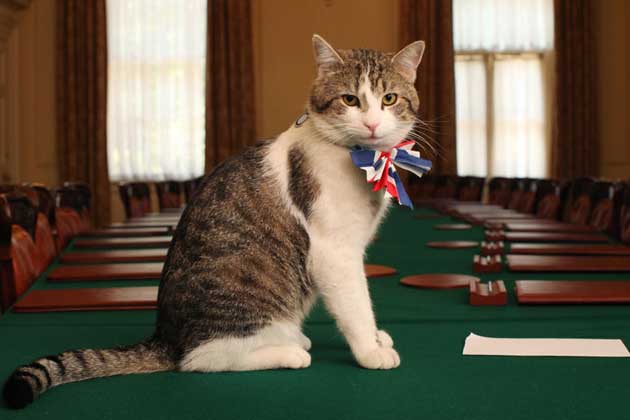
Larry the cat
He has captured the hearts of the Great British public and the press teams often camped outside the front door. In turn the nation sends him gifts and treats daily.
Larry spends his days greeting guests to the house, inspecting security defences and testing antique furniture for napping quality. His day-to-day responsibilities also include contemplating a solution to the mouse occupancy of the house. Larry says this is still ‘in tactical planning stage’.
Is this page useful?
- Yes this page is useful
- No this page is not useful
Help us improve GOV.UK
Don’t include personal or financial information like your National Insurance number or credit card details.
To help us improve GOV.UK, we’d like to know more about your visit today. We’ll send you a link to a feedback form. It will take only 2 minutes to fill in. Don’t worry we won’t send you spam or share your email address with anyone.
- Inventors and Inventions
- Philosophers
- Film, TV, Theatre - Actors and Originators
- Playwrights
- Advertising
- Military History
- Politicians
- Publications
- Visual Arts
10 Downing Street
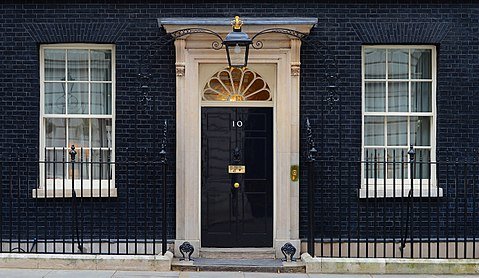
***TOO LONG***10 Downing Street (pronunciation (help·info)) in London, also known colloquially in the United Kingdom as Number 10, is the official residence and executive office of the First Lord of the Treasury, usually also the Prime Minister of the United Kingdom. Along with the adjoining Cabinet Office at 70 Whitehall, it is the headquarters of the Government of the United Kingdom.
Situated in Downing Street in the City of Westminster, London, Number 10 is over 300 years old and contains approximately 100 rooms. A private residence for the prime minister's use occupies the third floor and there is a kitchen in the basement. The other floors contain offices and conference, reception, sitting and dining rooms where the prime minister works, and where government ministers, national leaders and foreign dignitaries are met and hosted. At the rear is an interior courtyard and a terrace overlooking a 1⁄2 acre (0.2 ha) garden. Adjacent to St James's Park, Number 10 is approximately 3⁄4 mile (1.2 km) from Buckingham Palace, the London residence of the British Monarch, and near the Palace of Westminster, the meeting place of both Houses of Parliament.
Originally three houses, Number 10 was offered to Sir Robert Walpole by King George II in 1732. Walpole accepted on the condition that the gift was to the office of First Lord of the Treasury. The post of First Lord of the Treasury has, for much of the 18th and 19th centuries and invariably since 1905, been held by the Prime Minister. Walpole commissioned William Kent to join the three houses and it is this larger house that is known as Number 10 Downing Street.
Despite its size and convenient location near to Parliament, few early prime ministers lived at 10 Downing Street. Costly to maintain, neglected, and run-down, Number 10 was scheduled to be demolished several times, but the property survived and became linked with many statesmen and events in British history. In 1985, Margaret Thatcher said Number 10 had become "one of the most precious jewels in the national heritage".
10 Downing Street is Government property. Its registered legal title is held in the name of Secretary of State for Levelling Up, Housing and Communities (the Secretary of State is a corporation sole).
Original Number 10
Number 10 Downing Street was originally three properties: a mansion overlooking St James's Park called "the House at the Back", a town house behind it and a cottage. The town house, from which the modern building gets its name, was one of several built by Sir George Downing between 1682 and 1684.
Downing, a notorious spy for Oliver Cromwell and later Charles II, invested in property and acquired considerable wealth. In 1654, he purchased the lease on land south of St James's Park, adjacent to the House at the Back within walking distance of parliament. Downing planned to build a row of terraced town houses "for persons of good quality to inhabit in ..." The street on which he built them now bears his name, and the largest became part of Number 10 Downing Street.
Straightforward as the investment seemed, it proved otherwise. The Hampden family had a lease on the land that they refused to relinquish. Downing fought their claim, but failed and had to wait 30 years before he could build. When the Hampden lease expired, Downing received permission to build on land further west to take advantage of more recent property developments. The new warrant issued in 1682 reads: "Sir George Downing ... [is authorised] to build new and more houses ... subject to the proviso that it be not built any nearer than 14 feet of the wall of the said Park at the West end thereof". Between 1682 and 1684, Downing built a cul-de-sac of two-storey town houses with coach-houses, stables and views of St James's Park. Over the years, the addresses changed several times. In 1787 Number 5 became "Number 10".
Downing employed Sir Christopher Wren to design the houses. Although large, they were put up quickly and cheaply on soft soil with shallow foundations. Winston Churchill wrote that Number 10 was "shaky and lightly built by the profiteering contractor whose name they bear".
The upper end of the Downing Street cul-de-sac closed off the access to St James's Park, making the street quiet and private. An advertisement in 1720 described it as "a pretty open Place, especially at the upper end, where are four or five very large and well-built Houses, fit for Persons of Honour and Quality; each House having a pleasant Prospect into St James's Park, with a Tarras Walk". The cul-de-sac had several distinguished residents: Elizabeth Paston lived at Number 10 between 1688 and 1689, Lord Lansdowne from 1692 to 1696 and the Earl of Grantham from 1699 to 1703.
Downing did not live in Downing Street. In 1675 he retired to Cambridge, where he died in 1684, a few months after building was completed. In 1800 the wealth he had accumulated was used to found Downing College, Cambridge, as had been his wish should his descendants fail in the male line. Downing's portrait hangs in the entrance hall of Number 10.
The "House at the Back", the largest of the three houses which were combined to make Number 10, was a mansion built in about 1530 next to Whitehall Palace. Rebuilt, expanded, and renovated many times since, it was originally one of several buildings that made up the "Cockpit Lodgings", so-called because they were attached to an octagonal structure used for cock-fighting. Early in the 17th century, the Cockpit was converted to a concert hall and theatre; after the Glorious Revolution of 1688, some of the first cabinet meetings were held there secretly.
For many years, the "House at the Back" was the home of Thomas Knevett, Keeper of Whitehall Palace, famous for capturing Guy Fawkes in 1605 and foiling his plot to assassinate King James I. The previous year, Knevett had moved into a house next door, approximately where Number 10 is today.
From that time, the "House at the Back" was usually occupied by members of the royal family or the government. Princess Elizabeth, eldest daughter of King James I, lived there from 1604 until 1613 when she married Frederick V, Elector Palatine and moved to Heidelberg. She was the grandmother of King George I, the Elector of Hanover, who became King of Great Britain in 1714, and was the great-grandmother of King George II, who presented the house to Walpole in 1732.
George Monck, 1st Duke of Albemarle, the general responsible for the Restoration of the Monarchy in 1660, lived there from 1660 until his death in 1671. As head of the Great Treasury Commission of 1667–1672, Albemarle transformed accounting methods and allowed the Crown greater control over expenses. His secretary, Sir George Downing, 1st Baronet, who built Downing Street, is thought to have created these changes. Albemarle is the first treasury minister to have lived in what became the home of the First Lord of the Treasury and Prime Minister.
In 1671 George Villiers, 2nd Duke of Buckingham took possession when he joined the Cabal Ministry. At considerable expense, Buckingham rebuilt the house. The result was a spacious mansion, lying parallel to Whitehall Palace with a view of St James Park from its garden.
After Buckingham retired in 1676, Lady Charlotte Fitzroy, Charles II's daughter, moved in when she married Edward Lee, 1st Earl of Lichfield. The Crown authorised extensive rebuilding which included adding a storey, thus giving it three main floors, an attic and basement. This structure can be seen today as the rear section of Number 10.(See Plan of the Premises Granted to the Earl and Countess of Lichfield in 1677) The likely reason that repair was required is that the house had settled in the swampy ground near the Thames, causing structural damage. Like Downing Street, it rested on a shallow foundation, a design error that caused problems until 1960 when the modern Number 10 was rebuilt on deep pilings.
The Lichfields followed James II into exile after the Glorious Revolution. Two years later in 1690, William III and Mary II gave the "House at the Back" to Hendrik van Nassau-Ouwerkerk, a Dutch general who had assisted in securing the Crown for the Prince of Orange. Nassau, who Anglicised his name to "Overkirk", lived there until his death in 1708.
The "House at the Back" reverted to the Crown when Lady Overkirk died in 1720. The Treasury issued an order "for repairing and fitting it up in the best and most substantial manner" at a cost of £2,522. The work included: "The Back passage into Downing street to be repaired and a new door; a New Necessary House to be made; To take down the Useless passage formerly made for the Maids of Honour to go into Downing Street, when the Queen lived at the Cockpit; To New Cast a great Lead Cistern & pipes and to lay the Water into the house & a new frame for ye Cistern".(See Buildings on the Site of the Cockpit and Number 10 Downing Street c1720)
The name of the "House at the Back" changed with the occupant, from Lichfield House to Overkirk House in 1690 to Bothmer House in 1720.
First politician and "head of government" in the house
Johann Caspar von Bothmer, Premier Minister of the Electorate of Hanover, head of the German Chancery and adviser to George I and II, took up residency in 1720. Although Bothmer complained about "the ruinous Condition of the Premises", he lived there until his death in 1732. Even though Count von Bothmer was not British, he was a subject of George I and George II and the first politician and head of a government who resided in 10 Downing Street.
When Count Bothmer died, ownership of the "House at the Back" reverted to the Crown. George II took this opportunity to offer it to Sir Robert Walpole, often called the first prime minister, as a gift for his services to the nation: stabilising its finances, keeping it at peace and securing the Hanoverian succession. Coincidentally, the King had obtained the leases on two Downing Street properties, including Number 10, and added these to his proposed gift.
Walpole did not accept the gift for himself. He proposed—and the King agreed—that the Crown give the properties to the Office of First Lord of the Treasury. Walpole would live there as the incumbent First Lord, but would vacate it for the next one.
To enlarge the new house, Walpole persuaded Mr Chicken, the tenant of a cottage next door, to move to another house in Downing Street. This small house and the mansion at the back were then incorporated into Number 10. Walpole commissioned William Kent to convert them into one building. Kent joined the larger houses by building a two-storey structure between them, consisting of one long room on the ground floor and several above. The remaining interior space was converted into a courtyard. He connected the Downing Street houses with a corridor.
Having united the structures, Kent gutted and rebuilt the interior. He then surmounted the third storey of the house at the back with a pediment. To allow Walpole quicker access to Parliament, Kent closed the north side entrance from St James's Park, and made the door in Downing Street the main entrance.
The rebuilding took three years. On 23 September 1735, the London Daily Post announced that: "Yesterday the Right Hon. Sir Robert Walpole, with his Lady and Family, removed from their House in St James's Square, to his new House, adjoining to the Treasury in St James's Park". The cost of conversion is unknown. Originally estimated at £8,000, the final cost probably exceeded £20,000.
Walpole did not enter through the now-famous door; that would not be installed until forty years later. Kent's door was modest, belying the spacious elegance beyond. The First Lord's new, albeit temporary, home had sixty rooms, with hardwood and marble floors, crown moulding, elegant pillars and marble mantelpieces; those on the west side with views of St James's Park. One of the largest rooms was a study measuring forty feet by twenty with enormous windows overlooking St James's Park. "My Lord's Study" (as Kent labelled it in his drawings) would later become the Cabinet Room where Prime Ministers meet with the Cabinet ministers.
Shortly after moving in, Walpole ordered that a portion of the land outside his study be converted into a terrace and garden. Letters patent issued in April 1736 state that: "... a piece of garden ground situated in his Majesty's park of St James's, & belonging & adjoining to the house now inhabited by the Right Honourable the Chancellor of His Majesty's Exchequer, hath been lately made & fitted up at the Charge ... of the Crown".
The same document confirmed that Number 10 Downing Street was: "meant to be annexed & united to the Office of his Majesty's Treasury & to be & to remain for the Use & Habitation of the first Commissioner of his Majesty's Treasury for the time being".
Walpole lived in Number 10 until 1742. Although he had accepted it on behalf of future First Lords of the Treasury, it would be 21 years before any of his successors chose to live there; the five who followed Walpole preferred their own homes. This was the pattern until the beginning of the 20th century. Of the 31 First Lords from 1735 to 1902, only 16 (including Walpole) lived in Number 10.
One reason many First Lords chose not to live in Number 10 was that most owned London town houses superior in size and quality. To them, Number 10 was unimpressive. Their possession of the house, albeit temporary, was a perquisite they could bestow as a political reward. Most lent it to the Chancellor of the Exchequer, others to lesser officials or to friends and relatives.
Another reason for its unpopularity was that Number 10 was a hazardous place in which to live. Prone to sinking because it was built on soft soil and a shallow foundation, floors buckled and walls and chimneys cracked. It became unsafe and frequently required repairs. In 1766, for example, Charles Townshend, Chancellor of the Exchequer, pointed out that the house was in a dilapidated condition. His architect's letter to the Treasury stated: "...we have caused the House in Downing Street belonging to the Treasury to be surveyed, & find the Walls of the old part of the said House next the street to be much decayed, the Floors & Chimneys much sunk from the level". Townshend ordered extensive repairs, which were still incomplete eight years later. A note from Lord North to the Office of Works, dated September 1774, asks that the work on the front of the house, "which was begun by a Warrant from the Treasury dated 9 August 1766", should be finished. (See Kent's Treasury and No. 10, Downing Street, circa 1754.)
Treasury officials complained that the building was costing too much to maintain; some suggested that it should be razed and a new house constructed on the site or elsewhere. In 1782 the Board of Works reporting on "the dangerous state of the old part of the House", stated that "no time be lost in taking down said building". In 1783 the Duke of Portland moved out because it was once again in need of repair. A committee found that the money spent so far was insufficient. This time the Board of Works declared that "the Repairs, Alterations & Additions at the Chancellor of the Exchequer's House will amount to the sum of £5,580, exclusive of the sum for which they already have His Majesty's Warrant. And praying a Warrant for the said sum of £5,580—and also praying an Imprest of that sum to enable them to pay the Workmen". This proved to be a gross underestimate; the final bill was over £11,000. The Morning Herald fumed about the expense: "£500 pounds p.a. preceding the Great Repair, and £11,000 the Great Repair itself! So much has this extraordinary edifice cost the country – For one moiety of the sum a much better dwelling might have been purchased!"(See Plan of the Design for Number 10 c1781.)
A few prime ministers however did enjoy living in Number 10. Lord North, who conducted the war against the American Revolution, lived there happily with his family from 1767 to 1782. William Pitt the Younger, who made it his home for twenty years (longer than any First Lord before or since) from 1783 to 1801 and from 1804 to 1806, referred to it as "My vast, awkward house". While there, Pitt reduced the national debt, formed the Triple Alliance against France and won passage of the Act of Union that created the United Kingdom of Great Britain and Ireland. Fredrick Robinson, Lord Goderich took a special liking to the house in the late 1820s and spent state funds lavishly remodelling the interior.
Nevertheless, for 70 years following Pitt's death in 1806, Number 10 was rarely used as the First Lord's residence. From 1834 to 1877, it was either vacant or used only for offices and meetings.
Downing Street declined at the turn of the 19th century, becoming surrounded with run-down buildings, dark alleys, the scene of crime and prostitution. Earlier, the government had taken over the other Downing Street houses: the Colonial Office occupied Number 14 in 1798; the Foreign Office was at Number 16 and the houses on either side; the West India Department was in Number 18; and the Tithe Commissioners in Number 20. The houses deteriorated from neglect, became unsafe, and one by one were demolished. By 1857 Downing Street's townhouses were all gone except for Number 10, Number 11 (customarily the Chancellor of the Exchequer's residence), and Number 12 (used as offices for Government Whips). In 1879 a fire destroyed the upper floors of Number 12; it was renovated but only as a single-storey structure.(See Numbers 10, 11, and 12 Downing Street First Floor Plan and Ground Floor Plan.)
When Lord Salisbury retired in 1902, his nephew, Arthur James Balfour, became Prime Minister. It was an easy transition: he was already First Lord of the Treasury and he was already living in Number 10. Balfour revived the custom that Number 10 is the First Lord and Prime Minister's official residence. It has remained the custom since.
However, there have been numerous times when prime ministers have unofficially lived elsewhere out of necessity or preference. Winston Churchill, for example, had a great affection for Number 10, but, during World War II, he grudgingly slept in the hastily converted flat on the ground floor of what was then the New Public Office building (NPO) at nearby Storey's Gate. The flat became known as the No.10 Annexe, and lay above the much more comprehensive underground bunker now known as the Cabinet War Rooms, and where he also had a bedroom, very rarely used. To reassure the people that his government was functioning normally, he insisted on being seen entering and leaving Number 10 occasionally, and indeed, continued to use it for meetings and dinners despite being urged not to.Harold Wilson, during his second ministry from 1974 to 1976, lived in his home in Lord North Street because Mary Wilson wanted "a proper home". However, recognizing the symbolic importance of Number 10, he worked and held meetings there and entertained guests in the State Dining Room.
For most of his premiership, Tony Blair lived in the more spacious residence above Number 11 to accommodate his relatively large family (a wife and four children). In May 2010, it was reported that David Cameron, who also had four small children upon taking office, would also take up actual residence above Number 11, and his Chancellor, George Osborne, above Number 10.
Despite these exceptions, Number 10 has been known as the prime minister's official home for over one hundred years. By the turn of the 20th century, photography and the penny press had linked Number 10 in the public mind with the premiership. The introduction of films and television would strengthen this association. Pictures of prime ministers with distinguished guests at the door became commonplace. With or without the prime minister present, visitors had their picture taken. Suffragettes posed in front of the door when they petitioned H. H. Asquith for women's rights in 1913, a picture that became famous and was circulated around the world. In 1931, Mohandas Gandhi, wearing the traditional homespun dhoti, posed leaving Number 10 after meeting with Ramsay MacDonald to discuss India's independence. This picture, too, became famous especially in India. The freedom fighters could see their leader had been received in the prime minister's home. Couse's elegant, understated door—stark black, framed in cream white with a bold white "10" clearly visible—was the perfect backdrop to record such events. Prime Ministers made historic announcements from the front step. Waving the Anglo-German Agreement of Friendship, Neville Chamberlain proclaimed "Peace with honour" in 1938 from Number 10 after his meeting with Adolf Hitler in Munich. During World War II, Churchill was photographed many times emerging confidently from Number 10 holding up two fingers in the sign for "Victory". The building itself, however, did not escape the London Blitz entirely unscathed; in February 1944 a bomb fell on nearby Horse Guards Parade and some of the drawing-room windows were destroyed.
The symbol of British government, Number 10 became a gathering place for protesters. Emmeline Pankhurst and other suffragette leaders stormed Downing Street in 1908; anti-Vietnam War protestors marched there in the 1960s, as did anti-Iraq and Afghanistan War protestors in the 2000s. Number 10 became an obligatory stop in every tourist's sightseeing trip to London. Ordinary people, not only British but foreign tourists, posed smiling and laughing in front of its famous door.
By the middle of the 20th century, Number 10 was falling apart again. The deterioration had been obvious for some time. The number of people allowed in the upper floors was limited for fear the bearing walls would collapse. The staircase had sunk several inches; some steps were buckled and the balustrade was out of alignment. Dry rot was widespread throughout. The interior wood in the Cabinet Room's double columns was like sawdust. Skirting boards, doors, sills and other woodwork were riddled and weakened with disease. After reconstruction had begun, miners dug down into the foundations and found that the huge wooden beams supporting the house had decayed.
In 1958, a committee under the chairmanship of the Earl of Crawford and Balcarres was appointed by Harold Macmillan to investigate the condition of the house and make recommendations. In the committee's report there was some discussion of tearing down the building and constructing an entirely new residence but because the prime minister's home had become an icon of British architecture like Windsor Castle, Buckingham Palace and the Houses of Parliament, the committee recommended that Number 10 (and Numbers 11 and 12) should be rebuilt using as much of the original materials as possible. The interior would be photographed, measured, disassembled, and restored. A new foundation with deep pilings would be laid and the original buildings reassembled on top of it, allowing for much needed expansion and modernisation. Any original materials that were beyond repair – such as the pair of double columns in the Cabinet Room – would be replicated in detail. This was a formidable undertaking: the three buildings contained over 200 rooms spread out over five floors.
The architect Raymond Erith carried out the design for this painstaking work and the contractor that undertook it was John Mowlem & Co.The Times reported initially that the cost for the project would be £400,000. After more careful studies were completed, it was concluded that the "total cost was likely to be £1,250,000" and would take two years to complete. In the end, the cost was close to £3,000,000 and took almost three years due in large part to 14 labour strikes. There were also delays when archaeological excavations uncovered important artefacts dating from Roman, Saxon and medieval times. Macmillan lived in Admiralty House during the reconstruction.
The new foundation was made of steel-reinforced concrete with pilings sunk 6 to 18 feet (1.8 to 5.5 m). The "new" Number 10 consisted of about 60% new materials; the remaining 40% was either restored or replicas of originals. Many rooms and sections of the new building were reconstructed exactly as they were in the old Number 10. These included: the garden floor, the door and entrance foyer, the stairway, the hallway to the Cabinet Room, the Cabinet Room, the garden and terrace, the Small and Large State Rooms and the three reception rooms. The staircase, however, was rebuilt and simplified. Steel was hidden inside the columns in the Pillared Drawing Room to support the floor above. The upper floors were modernised and the third floor extended over Numbers 11 and 12 to allow more living space. As many as 40 coats of paint were stripped from the elaborate cornices in the main rooms revealing details unseen for almost 200 years in some cases.
When builders examined the exterior façade, they discovered that the black colour visible even in photographs from the mid-19th century was misleading; the bricks were actually yellow. The black appearance was the product of two centuries of pollution. To preserve the 'traditional' look of recent times, the newly cleaned yellow bricks were painted black to resemble their well-known appearance. The thin tuckpointing mortar between the bricks is not painted, and so contrasts with the bricks.
Although the reconstruction was generally considered an architectural triumph, Erith was disappointed. He complained openly during and after the project that the government had altered his design to save money. "I am heart broken by the result," he said. "The whole project has been a frightful waste of money because it just has not been done properly. The Ministry of Works has insisted on economy after economy. I am bitterly disappointed with what has happened." Erith described the numbers on the front, intended to be based on historical models, as 'a mess' and 'completely wrong' to a fellow historian.
Erith's concerns proved justified. Within a few years, dry rot was discovered, especially in the main rooms due to inadequate waterproofing and a broken water pipe. Extensive reconstruction again had to be undertaken in the late 1960s to resolve these problems. Further extensive repairs and remodelling, commissioned by Margaret Thatcher, were completed in the 1980s under the direction of Erith's associate, Quinlan Terry.
1990–present
The work done by Erith and Terry in the 1960s and 1980s represent the most extensive remodelling of Number 10 in recent times. Since 1990 when the Terry reconstruction was completed, repairing, redecorating, remodelling, and updating the house has been ongoing as needed. The IRA mortar attack in February 1991 led to extensive work being done to repair the damage (mostly to the garden and exterior walls) and to improve security. In the summer of 1993 windows were rebuilt and in 1995 computer cables installed. In 1997, the building was remodelled to provide extra space for the prime minister's greatly increased staff.
To accommodate their large families, both Tony Blair and David Cameron chose to live in the private residence above Number 11 rather than the smaller one above Number 10. In 2010, the Camerons completely modernised the 50-year-old private kitchen in Number 11. In March 2020, Prime Minister Boris Johnson refurbished the residential apartment at Number 11. This became the subject of public controversy, and an Electoral Commission inquiry took place into the financing of the refurbishment.
10 Downing Street today
The current tenant of 10 Downing Street is the Chancellor of the Exchequer, Rishi Sunak. It has been common practice in recent decades for the Prime Minister to live at Number 11, as its residential apartment is larger, and for the Chancellor to live at Number 10. However, the traditional residencies have not changed in official terms.
It presently houses the UK Cabinet Room in which Cabinet meetings in the UK take place, chaired by the current Prime Minister, Boris Johnson. It also houses the Prime Minister's Executive Office, which deals with logistics and diplomacy concerning the government of the United Kingdom.
Number 10's door is the product of the renovations Charles Townshend ordered in 1766; it was probably not completed until 1772. Executed in the Georgian style by the architect Kenton Couse, it is unassuming and narrow, consisting of a single white stone step leading to a modest brick front. The small, six-panelled door, originally made of black oak, is surrounded by cream-coloured casing and adorned with a semicircular fanlight window. Painted in white, between the top and middle sets of panels, is the number "10". The zero of the number "10" is painted in a very eccentric style, in a 37° angle anticlockwise. One theory is that this is in fact a capital 'O' as found in the Roman's Trajan alphabet that was used by the Ministry of Works at the time. A black iron knocker in the shape of a lion's head is between the two middle panels; below the knocker is a brass letter box with the inscription "First Lord of the Treasury". The doorbell is inscribed with "PUSH" although is rarely used in practice. A black ironwork fence with spiked newel posts runs along the front of the house and up each side of the step to the door. The fence rises above the step into a double-swirled archway, supporting an iron gas lamp surmounted by a crown.(See The Entrance Door c1930: As seen from the outside)
After the IRA mortar attack in 1991, the original black oak door was replaced by a blast-proof steel one. Regularly removed for refurbishment and replaced with a replica, it is so heavy that it takes eight men to lift it. The brass letterbox still bears the legend "First Lord of the Treasury". The original door was put on display in the Churchill Museum at the Cabinet War Rooms.
The door cannot be opened from the outside; there is always someone inside to unlock the door.
Beyond the door, Couse installed black and white marble tiles in the entrance hall that are still in use. A guard's chair designed by Chippendale sits in one corner. Once used when policemen sat on watch outside in the street, it has an unusual "hood" designed to protect them from the wind and cold and a drawer underneath where hot coals were placed to provide warmth. Scratches on the right arm were caused by their pistols rubbing up against the leather.
Number 10 Downing Street has a lift.
Couse also added a bow front to the small cottage—formerly Mr Chicken's house—incorporated into Number 10 in Walpole's time.(See The Entrance Door c1930: As seen from inside showing the black and white marble floor and the door providing access to Number 11)
Main staircase
When William Kent rebuilt the interior between 1732 and 1734, his craftsmen created a stone triple staircase. The main section had no visible supports. With a wrought iron balustrade, embellished with a scroll design, and mahogany handrail, it rises from the garden floor to the third floor. Kent's staircase is the first architectural feature visitors see as they enter Number 10. Black and white engravings and photographs of all the past prime ministers decorate the wall. They are rearranged slightly to make room for a photograph of each new Prime Minister. There is one exception. Winston Churchill is represented in two photographs. At the bottom of the staircase are group photographs of Prime Ministers with their Cabinet ministers and representatives to imperial conferences. (See The Main Stairway c1930 General view showing portraits of the prime ministers and Detail of the Wrought Iron Balustrade) (See also Simon Schama's Tour of Downing Street. Pt4: The Staircase)
In Kent's design for the enlarged Number 10, the Cabinet Room was a simple rectangular space with enormous windows. As part of the renovations begun in 1783, it was extended, giving the space its modern appearance. Probably not completed until 1796, this alteration was achieved by removing the east wall and rebuilding it several feet inside the adjoining secretaries' room. At the entrance, a screen of two pairs of Corinthian columns was erected (to carry the extra span of the ceiling) supporting a moulded entablature that wraps around the room. Robert Taylor, the architect who executed this concept, was knighted on its completion. The resulting small space, framed by the pillars, serves as an anteroom to the larger area. Hendrick Danckerts' painting "The Palace of Whitehall" (shown at the beginning of this article) usually hangs in the ante-room. It also contains two large bookcases that house the prime minister's library; Cabinet members traditionally donate to the collection on leaving office – a tradition that began with Ramsay MacDonald in 1931.
Although Kent intended the First Lord to use this space as his study, it has rarely served that purpose; it has almost always been the Cabinet Room. There have been a few exceptions. Stanley Baldwin used the Cabinet Room as his office. A few prime ministers, such as Tony Blair, occasionally worked at the Cabinet Room table. Painted off-white with large floor to ceiling windows along one of the long walls, the room is light and airy. Three brass chandeliers hang from the high ceiling. The Cabinet table, purchased during the Gladstone era, dominates the room. The modern boat-shaped top, introduced by Harold Macmillan in the late 1950s, is supported by huge original oak legs. The table is surrounded by carved, solid mahogany chairs that also date from the Gladstone era. The prime minister's chair, the only one with arms, is situated midway along one side in front of the marble fireplace, facing the windows; when not in use, it is positioned at an angle for easy access. The only picture in the room is a copy of a portrait of Sir Robert Walpole by Jean-Baptiste van Loo hanging over the fireplace. Each Cabinet member is allocated a chair based on order of seniority. Blotters inscribed with their titles mark their places.
The First Lord has no designated office space in Number 10; each has chosen one of the adjoining rooms as his or her private office.
State drawing rooms
Number 10 has three inter-linked state drawing rooms: the Pillared Drawing Room, the Terracotta Drawing Room and the White Drawing Room. (See the three state drawing rooms.)
The largest is the Pillared Room thought to have been created in 1796 by Taylor. Measuring 37 feet (11 m) long by 28 feet (8.5 m) wide, it takes its name from the twin Ionic pilasters with straight pediments at one end. Today, there is a portrait of Queen Elizabeth I over the fireplace; during the Thatcher Ministry (1979–1990), a portrait of William Pitt by Romney was hung there.
A Persian carpet covers almost the entire floor. A copy of a 16th-century original now kept in the Victoria and Albert Museum, there is an inscription woven into it that reads: "I have no refuge in the world other than thy threshold. My head has no protection other than this porchway. The work of a slave of the holy place, Maqsud of Kashan in the year 926" (the Islamic year corresponding to 1520).
In the restoration conducted in the late 1980s, Quinlan Terry restored the fireplace. Executed in the Kentian style, the small Ionic pilasters in the over-mantel are miniature duplicates of the large Ionic pillars in the room. The Ionic motif is also found in the door surrounds and panelling.
Sparsely furnished with a few chairs and sofas around the walls, the Pillared Room is usually used to receive guests before they go into the State Dining Room. However, it is sometimes used for other purposes that require a large open space. International agreements have been signed in this room. Tony Blair entertained the England Rugby Union team in the Pillared Room after they won the World Cup in 2003. John Logie Baird gave Ramsay MacDonald a demonstration of his invention, the television, in this room.(See The Pillared Drawing Room c1927)
The Terracotta Room is the middle of the three drawing rooms. It was used as the dining room when Sir Robert Walpole was prime minister. The name changes according to the colour it is painted. When Margaret Thatcher came to power it was the Blue Room; she had it re-decorated and renamed the Green Room. It is now painted terracotta.
In the renovation of the 1980s Quinlan Terry introduced large Doric order columns to this room in the door surrounds and designed a very large Palladian overmantel for the fireplace with small double Doric columns on each side with the royal arms above. Terry also added an ornate gilded ceiling to give the rooms a more stately look. Carved into the plasterwork above the door leading to the Pillared Room is a tribute to Margaret Thatcher: a straw-carrying 'thatcher'.
The White State Drawing room was, until the 1940s, used by Prime Ministers and their partners for their private use. It was here that Edward Heath kept his grand piano. It is often used as the backdrop for television interviews and is in regular use as a meeting room for Downing Street staff. The room links through to the Terracotta Room next door. In the reconstruction during the late 1980s, Quinlan Terry used Corinthian columns and added ornate Baroque-style central ceiling mouldings and corner mouldings of the four national flowers of the United Kingdom: rose (England), thistle (Scotland), daffodil (Wales) and shamrock (Northern Ireland).
State Dining Room
When Frederick Robinson (later Lord Goderich), became Chancellor of the Exchequer in 1823, he decided to leave a personal legacy to the nation. To this end, he employed Sir John Soane, the distinguished architect who had designed the Bank of England and many other famous buildings, to build a State Dining Room for Number 10. Begun in 1825 and completed in 1826 at a cost of £2,000, the result is a spacious room with oak panelling and reeded mouldings. Accessed through the first floor, its vaulted, arched ceiling rises up through the next so that it actually occupies two floors. Measuring 42 by 26 feet (12.8 by 7.9 m), it is the largest room in Number 10. Soane was the guest of honour when the dining room was first used on 4 April 1826.
The room is usually furnished with a table surrounded by 20 reproduction Adam style chairs originally made for the British Embassy in Rio de Janeiro. For larger gatherings, a horseshoe-shaped table is brought in that will accommodate up to 65 guests. On these occasions, the table is set with the Silver Trust Silver set given to Downing Street in the 1990s. (See the State Dining room with the Silver Trust Silver in use for a luncheon) Above the fireplace, overlooking the room, is a massive portrait by John Shackleton of George II, the king who originally gave the building to the First Lord of the Treasury in 1732. Celebrity chefs such as Nigella Lawson have cooked for Prime Ministers' guests using the small kitchen next door. Entering through the Small Dining Room, Blair used this room for his monthly press conferences. (See Simon Schama's Tour of Downing Street. Pt 3: The Dining Room) (See The State Dining Room c1930: View toward the entrance and View from the entrance and also a more modern view)
The great kitchen located in the basement was another part of the renovations begun in 1783, probably also under the direction of Robert Taylor. Seldom seen by anyone other than staff, the space is two storeys high with a huge arched window and vaulted ceiling. Traditionally, it has always had a chopping block work table in the centre that is 14 feet (4.3 m) long, 3 feet (0.91 m) wide and 5 inches (13 cm) thick.
Smaller Dining or Breakfast Room
Above Taylor's vaulted kitchen, between the Pillared Room and the State Dining room, Soane created a Smaller Dining Room (sometimes called the Breakfast Room) that still exists. To build it, Soane removed the chimney from the kitchen to put a door in the room. He then moved the chimney to the east side, running a Y-shaped split flue inside the walls up either side of one of the windows above. The room therefore has a unique architectural feature: over the fireplace there is a window instead of the usual chimney breast.
With its flat unadorned ceiling, simple mouldings and deep window seats, the Small Dining Room is intimate and comfortable. Usually furnished with a mahogany table seating only eight, Prime Ministers have often used this room when dining with family or when entertaining special guests on more personal state occasions.(See the Small Dining or Breakfast Room c1927. The double doors behind the table lead to the State Dining Room.)
The terrace and garden were constructed in 1736 shortly after Walpole moved into Number 10. The terrace, extending across the back, provides a full view of St James's Park. The garden is dominated by a half-acre (0.2 ha) open lawn which wraps around Numbers 10 and 11 in an L-shape. No longer "fitted with variety Walle fruit and diverse fruit trees" as it was in the 17th century, there is now a centrally located flower bed around a holly tree surrounded by seats. Tubs of flowers line the steps from the terrace; around the walls are rose beds with flowering and evergreen shrubs. (See North elevation of Number 10 with steps leading to the garden) The terrace and garden have provided a casual setting for many gatherings of First Lords with foreign dignitaries, Cabinet ministers, guests, and staff. Prime Minister Tony Blair, for example, hosted a farewell reception in 2007 for his staff on the terrace. John Major announced his 1995 resignation as leader of the Conservative Party in the garden. Churchill called his secretaries the "garden girls" because their offices overlook the garden. It was also the location of the first press conference announcing the Coalition Government between David Cameron's Conservatives and Nick Clegg's Liberal Democrats.
Furnishings
Number 10 is filled with fine paintings, sculptures, busts and furniture. Only a few are permanent features. Most are on loan. About half belong to the Government Art Collection. The remainder are on loan from private collectors and from public galleries such as the National Portrait Gallery, the Tate Gallery, the Victoria and Albert Museum and the National Gallery. (See works from the Government Art Collection currently on display at Number 10)
About a dozen paintings are changed annually. More extensive changes occur when a new Prime Minister takes office and redecorates. These redecorations may reflect both individual taste as well as make a political statement. Edward Heath borrowed French paintings from the National Gallery and was loaned two Renoirs from a private collector. When Margaret Thatcher arrived in 1979 she insisted that the artwork had to be British and that it celebrate "British achievers". As a former chemist, she took pleasure in devoting the Small Dining Room to a collection of portraits of British scientists, such as Joseph Priestley and Humphry Davy. During the 1990s John Major converted the first floor anteroom into a small gallery of modern art, mostly British. He also introduced several paintings by John Constable and J. M. W. Turner, Britain's two best known 19th-century artists, and cricketing paintings by Archibald Stuart-Wortley including a portrait of one of England's most celebrated batsmen W. G. Grace.
In addition to outstanding artwork, Number 10 contains many exceptional pieces of furniture either owned by the house or on loan. One of the most striking and unusual is the Chippendale hooded guard's chair already mentioned that sits in a corner of the entrance hall. To its left is a long case clock by Benson of Whitehaven. A similar clock by Samuel Whichcote of London stands in the Cabinet anteroom. The White State Drawing Room contains examples of Adam furniture. The Green State Drawing Room contains mostly Chippendale furniture including a card table that belonged to Clive of India and a mahogany desk that is thought to have belonged to William Pitt the Younger and used by him during the Napoleonic Wars. In addition to the large carpet previously described, the Pillared State Drawing Room also contains a marble-topped table by Kent. The State Dining Room contains a mahogany sideboard by Adam.Until the late 19th century, Prime Ministers were required to furnish Number 10 at their own expense with furniture, tableware, china, linens, curtains and decorations. This arrangement began to change in 1877 when Benjamin Disraeli took up residency. He insisted that the Treasury should bear the cost of furnishings at least in the public areas. The Treasury agreed and a complex accounting procedure was developed whereby the outgoing prime minister was required to pay for "wear and tear" on furnishings that had been purchased by the Treasury. This system was used until November 1897 when the Treasury assumed responsibility for purchasing and maintaining almost all of the furnishings in both the public and private areas except decorating the walls with art work. In 1924 when Prime Minister Ramsay MacDonald took office, he did not own nor have the means to buy an extensive art collection. He had the Government Art Collection loan pieces. The arrangement became the standard practice.
250th anniversary: 1985
In 1985, Number 10 was 250 years old. To celebrate, Thatcher hosted a grand dinner in the State Dining Room for her living predecessors: Harold Macmillan, Alec Douglas-Home, Harold Wilson, Edward Heath and James Callaghan. Also in attendance were Elizabeth II and representatives of the families of every 20th-century Prime Minister since H. H. Asquith, including Lady Olwen Carey Evans (daughter of David Lloyd George), Lady Leonora Howard (daughter of Stanley Baldwin), and Clarissa Avon (widow of Sir Anthony Eden and niece of Winston Churchill).
That same year, the Leisure Circle published Christopher Jones' book No. 10 Downing Street, The Story of a House. In the foreword, Thatcher described her feelings for Number 10: "How much I wish that the public ... could share with me the feeling of Britain's historic greatness which pervades every nook and cranny of this complicated and meandering old building ... All Prime Ministers are intensely aware that, as tenants and stewards of No. 10 Downing Street, they have in their charge one of the most precious jewels in the nation's heritage".
For most of its history, Number 10 was accessible to the public. Early security consisted of two police officers. One stood guard outside the door. The other was stationed inside to open it. Since the door had no keyhole, the inside officer depended upon the lone outside officer.
During Thatcher's premiership, terrorist threats led to the implementation of a second level of security. Guarded gates were added at both ends of the street. Visitors could then be screened before approaching the door.
Despite the added measure, on 7 February 1991, the Provisional IRA used a van they parked in Whitehall to launch a mortar shell at Number 10. It exploded in the back garden, while Prime Minister John Major was holding a Cabinet meeting. Major moved to Admiralty House while repairs were being completed. This led to the addition of guardhouses at the street ends as well as other less visible measures. Each guardhouse is staffed by several armed police officers. The Metropolitan Police Service's Diplomatic Protection Group (DPG) provides overall protection and acts on intelligence from MI5.
Office of the Prime Minister
The Prime Minister's Office, for which the terms Downing Street and Number 10 are metonymous, lies within the 10 Downing Street building and is part of the Cabinet Office. It is staffed by a mix of career civil servants and special advisers. The highest ranking civil servant position is the principal private secretary to the prime minister, currentlyMartin Reynolds. From 2010 to 2012 and from May to September 2020, there was a Downing Street Permanent Secretary, held by Jeremy Heywood and Simon Case, respectively, which ranked above the principal private Secretary to the prime minister. From 1997 to 2019 and since 2020, the most senior special adviser post is the Downing Street chief of staff but this job title was out of use from July 2019 to November 2020 when the role was split into two positions with Dominic Cummings who served as the chief adviser to the prime minister, and Edward Lister who served as the chief strategic adviser to the prime minister. Lister served as acting chief of staff, but was replaced by Dan Rosenfield, who officially assumed the role in January 2021. Though Number 10 is formally part of the Cabinet Office, it reports directly to the Cabinet Secretary, who is currentlySimon Case.
In her report about parties on Government premises during the COVID pandemic, Sue Gray concluded that the size of the Downing Street operation had increased without the structures to support them, and too 'much responsibility and expectation is placed on the senior official whose principal function is ... support of the Prime Minister'. She said this needed to be addressed as a priority, and Boris Johnson agreed to the Office of the Prime Minister becoming a Government department. Several changes in staffing took place early in February 2022.
Current positions within the Office of the Prime Minister
List of current civil service and senior special adviser positions serving Prime Minister Boris Johnson:
Pre-2001 organisation:
The office was reorganised in 2001 into three directorates:
Changes were intended to strengthen the PM's office. However, some commentators have suggested that Blair's reforms have created something similar to a Prime Minister's Department. The reorganisation brought about the fusion of the old Prime Minister's Office and other Cabinet Office teams, with a number of units (including the Prime Minister's Strategy Unit) now reporting directly into the Prime Minister's Office. Since 2005, Number 10's Direct Communication Unit has not used its staff's real names on signed correspondence to MPs and members of the public; this is for security reasons.
However, the Institute for Government has written that the Cabinet Office (of which the Prime Minister's Office is a component) "is a long way from becoming a fully fledged premier's department", primarily based on the fact that the prime minister "largely lacks the direct policy responsibilities, either in statute or by convention under the Royal Prerogative, possessed by secretaries of state, who have substantial budgets voted to them by Parliament."
When you spoke to me some time ago upon the subject of the House in Downing Street, I was under the impression, as you were yourself, that the house was the King's & that he might dispose of it in any manner he might think proper. Upon Inquiry, however, it appeared that the House was attached to the Treasury as a Part of the Office. That the First Lord of the Treasury occupies it if he thinks proper. If he declines it, the Chancellor of the Exchequer occupies it, not as Chancellor of the Exchequer, but as second in the Commission of the Treasury. That if he declined it, it would go to the next in the Commission, or it might possibly be disposed of by the Board to any Member or Officer of the Treasury; but could not, & never has been detached from it. You are mistaken in supposing that Mr. Vansittart is the only Chancellor of the Exchequer who, without being first Lord of the Treasury, occupied it. Lord North certainly occupied it during the two years he was Chancellor of the Exchequer only. I believe Mr. Charles Townshend occupied it, but I know Mr. Dowdeswell did, & it is remarkable that he is, I believe, the only instance of a Chancellor of the Exchequer upon Record who was not in the Cabinet. The House stands in fact upon the same footing as the Houses of the Admiralty, which could not be assigned to any Person not belonging to that office.
- 10 Downing Street en.wikipedia.org
You might also like

Breaking News
Obama sparks buzz with surprise visit to 10 downing street amid buckingham palace drama.
- View Author Archive
- Get author RSS feed
Thanks for contacting us. We've received your submission.
Maybe Barack Obama knows what’s ailing Kate Middleton .
The 44th president raised eyebrows Monday when he popped by No. 10 Downing Street for a meeting with British Prime Minister Rishi Sunak .
Obama, 62, was tight-lipped about the reason for his surprise visit, but the British government said the sitdown had nothing to do with any royal family issues.
“The Prime Minister welcomed Barack Obama to No 10 this afternoon for an informal meeting, as part of the former President’s visit to London with the Obama Foundation,” a Downing Street spokesperson told The Post.

“They discussed a range of issues, including international affairs and AI.”
Obama, who founded his eponymous foundation along with wife Michelle in 2014, was seen entering Sunak’s home office via the back door at around 3 p.m. London time.
The former president remained for roughly one hour before departing alongside US Ambassador to the United Kingdom Jane Hartley, Sky News reported .
Reporters gathered outside No. 10 attempted to coax Obama over to take questions, to which the graying former leader responded, “I’m tempted” before walking back to a waiting motorcade.

The 44th president traveled to London three times during his eight years in office, with his last visit coming in April 2016.
Over the weekend, Obama delivered remarks to a sold-out crowd at the FTI SuperNova technology festival in Belgium.
Obama also stopped by Laeken Castle in Brussels, where he posed for a photo with Belgium’s King Philippe and Princess Elisabeth, Duchess of Brabant.
View this post on Instagram A post shared by Belgian Royal Palace (@belgianroyalpalace)
Sunak, 43, has been outspoken about trying to modernize government policies for the era of artificial intelligence.
Last fall, he hosted an AI Safety Summit that Vice President Kamala Harris attended.

Obama’s visit took place as Buckingham Palace finds itself engulfed in drama over the Princess of Wales’ absence from the public eye after undergoing abdominal surgery earlier this year .
Rumors about her condition have reached a fever pitch after she released a doctored family photo last week.
On Monday evening, The Sun newspaper published images of Kate and her husband, Prince William, shopping for groceries over the weekend in Windsor.
Share this article:

Advertisement
- Skip to main content
- Keyboard shortcuts for audio player
Larry the Cat celebrates 12 years of dutiful service at No. 10 Downing St.
Giulia Heyward

Larry the Cat is seen in front of No. 10 Downing St. on July 5, 2022. He has now been on the job as Chief Mouser at the British prime minister's official residence for a dozen years. Leon Neal/Getty Images hide caption
Larry the Cat is seen in front of No. 10 Downing St. on July 5, 2022. He has now been on the job as Chief Mouser at the British prime minister's official residence for a dozen years.
In an era of shaky political leadership, England's most dutiful public servant has reached an important milestone. Larry the Cat celebrated his 12th year as Chief Mouser for No. 10 Downing St., the residence and home office of Britain's prime minister, on Wednesday.
"It's has been a pleasure to serve you all for these last 12 years," Larry the Cat tweeted from the unofficial Twitter account for the feline. "If you're ever asked if you have a cat, but don't have the joy of one at home, know that you can answer yes; because I am yours and always will be."
It’s has been a pleasure to serve you all for these last 12 years. If you’re ever asked if you have a cat, but don’t have the joy of one at home, know that you can answer yes; because I am yours and always will be x (Pic @PjrFoto ) pic.twitter.com/ssFRpWlumB — Larry the Cat (@Number10cat) February 15, 2023
Larry's enduring presence at No. 10 is in stark contrast to the five prime ministers who have taken office in the past 12 years: David Cameron, Theresa May, Boris Johnson, Liz Truss and Rishi Sunak, whose term began in October .
His length of service also eclipses those of former prime ministers Margaret Thatcher, Tony Blair, Winston Churchill and Benjamin Disraeli.
The Chief Mouser's tenure began on Feb. 15, 2011, shortly after TV cameras caught footage of a rat outside the entrance of No. 10. The U.K. Cabinet, under then-Prime Minister Cameron, rescued Larry from Battersea Dogs & Cats Home and appointed him as Chief Mouser.

Larry the Cat outlasts a fourth U.K. prime minister
"Larry spends his days greeting guests to the house, inspecting security defences and testing antique furniture for napping quality," Larry's profile on the U.K. government website reads . "His day-to-day responsibilities also include contemplating a solution to the mouse occupancy of the house."
But even Larry is no stranger to controversy. A mouse sighting in 2011 called the integrity of his work into question and a visit to the vet in 2016 suggested his health could be deteriorating.
However, a video of the cat chasing a fox away from the No. 10 four months ago assuaged British citizens and signaled all was well.
As Larry cheekily tweeted back in November: "I live here permanently, politicians are temporary residents."
- Larry the cat
- No. 10 Downing Street
- United Kingdom

London Parks & Gardens
Visit the garden at 10 Downing Street

London Open Gardens is delighted to announce that the garden at Number 10 Downing Street will be opening via a public ballot during London Open Gardens 2024.
There will be two tours on Saturday 8 June 2024 at 11.30am and 1.30pm . 24 places are available on each tour, open to visitors aged 12 and over. Due to high demand, this event can only be applied for by ballot.

You are not required to purchase a London Open Gardens ticket to enter the ballot; however, this would grant you access to over 100 usually hidden green spaces open during the weekend. We are grateful that all ticket sales enable the London Parks & Gardens charity to protect such special places throughout the year.
Please view the Terms and Conditions for more information before you enter the ballot.
About the Garden

Constructed in 1736, the garden is dominated by an open lawn with rose beds commissioned by the late Baroness Thatcher, and is home to a bronze sculpture by Barbara Hepworth. Gardeners will be on hand to answer questions about the half acre site, its wildlife and sustainability.
Terms and Conditions
- Entrants must be over 12 years old.
- Only one entry per person via this website, but each entry may request one or two tickets.
- You are not required to purchase a ticket to enter this ballot. You will need to purchase a ticket to gain access the other 100+ usually hidden green spaces taking part in London Open Gardens weekend.
- If selected, you will be offered a place for the tour time you have selected. You will not be able to change your slot.
- Places on the tour are chosen randomly from those who have entered the ballot.
- The places chosen will be final and no correspondence will be entered into.
- The ballot is not open to employees of London Parks & Gardens or Downing Street, nor to their relatives.
- We will not pass your information on to any third parties; however, those selected for a place on the tour will have their details submitted for a basic security check.
- If you are selected for a place on the tour, you must take photographic ID with you (either a Passport or Driving Licence).
- Up to two places will be allocated per person as requested on the form.
- Places can only be used by the person(s) named in the ballot entry. You may not pass your place on to anyone else or change the names after the form has been submitted.
- Tours are subject to last-minute cancellation and/or changes in timing, including if a General Election is called. Should this occur, none of the organisers/parties involved can be held liable for any inconvenience or financial loss.
- Entries to the ballot will close on 7 May 2024 at 11:59pm.
- Selected participants will be notified by email from the LPG office. If you receive a notification you will be given 48 hours to confirm your availability along with necessary security information. Failure to confirm the required details in time may result in the loss of your place on the tour.
- If you don’t hear from us by 22 May, your ballot entry has not been chosen.
Garden map guide Participating gardens Guided walks and cycle tours Self-guided walk routes
Garden selector Downing Street ballot Changes to programme

- Privacy Overview
- Strictly Necessary Cookies
This website uses cookies so that we can provide you with the best user experience possible. Cookie information is stored in your browser and performs functions such as recognising you when you return to our website and helping our team to understand which sections of the website you find most interesting and useful.
Strictly Necessary Cookie should be enabled at all times so that we can save your preferences for cookie settings.
If you disable this cookie, we will not be able to save your preferences. This means that every time you visit this website you will need to enable or disable cookies again.
Stay up to date with notifications from The Independent
Notifications can be managed in browser preferences.
- UK Politics
- News Videos
- Paris 2024 Olympics
- Rugby Union
- Sport Videos
- John Rentoul
- Mary Dejevsky
- Andrew Grice
- Sean O’Grady
- Photography
- Theatre & Dance
- Culture Videos
- Food & Drink
- Health & Families
- Royal Family
- Electric Vehicles
- Car Insurance deals
- Lifestyle Videos
- UK Hotel Reviews
- News & Advice
- Simon Calder
- Australia & New Zealand
- South America
- C. America & Caribbean
- Middle East
- Politics Explained
- News Analysis
- Today’s Edition
- Home & Garden
- Broadband deals
- Fashion & Beauty
- Travel & Outdoors
- Sports & Fitness
- Sustainable Living
- Climate Videos
- Solar Panels
Behind The Headlines
On the ground, decomplicated, you ask the questions, binge watch, travel smart.
- Watch on your TV
- Crosswords & Puzzles
- Most Commented
- Newsletters
- Ask Me Anything
- Virtual Events
- Betting Sites
- Online Casinos
- Wine Offers
Thank you for registering
Please refresh the page or navigate to another page on the site to be automatically logged in Please refresh your browser to be logged in
Independent TV
Showing now | news.

Lucy Leeson | Tuesday 19 March 2024 08:28 GMT
Former White House communications director explains why Barack Obama visited Downing Street
Former White House communications director Anthony Scaramucci has opened up on why Barack Obama paid a surprise visit to Downing Street .
The former US president made the unexpected visit to No.10 on Monday (18 March) to meet with Rishi Sunak .
Appearing on Good Morning Britain on Tuesday (19 March), Mr Scaramucci was quizzed over Mr Obama’s visit by Susanna Reid and Ed Balls .
He said: “I think Obama is going to help Joe Biden in the coming months. He is probably expressing some sentiment from the White House to the prime minister about the coalition we need to have with the Ukrainian war.”

Barrister loses patience as he shouts at former Post Office executive

Gisele Bundchen sobs during Florida traffic stop over paparazzi

Watch Charles’s last public appearance as palace give health update

First cargo ships pass through Baltimore bridge after collapse
Editor’s picks.

The hidden pressures of playing real life figures

Instagram fuels self-doubt more than a catwalk ever could

Simon Calder answers your holiday questions in live event

What would a President Trump 2.0 look like?

Baltimore will rebuild, but at what cost? | On The Ground

New Yorkers turn to self-defence classes as punching attacks continue

Tom Walker: ‘Songwriting is my therapy’

Here’s why Greece is still a firm family summer holiday favourite

This 26-year-old could be Biden’s secret weapon | On The Ground

The NHS nurse fighting to be heard | On The Ground

The temple at the heart of Narendra Modi’s re-election bid

Delhi’s worsening air pollution leaves sufferers across the city

The true cost of disposable vapes | On the Ground

Trapped in the care system

When will the Cost of Living Crisis end?

How airlines greenwash the skies

Is it time to panic over AI? | Behind The Headlines

My personal struggle amid the global fight for abortion rights

Non-doms, ghost-doms and tax loopholes of the elite

The fight for LGBT+ rights in Poland

The war in Ukraine | Behind The Headlines

Are ultra-processed foods bad for you?

Why are UK councils going bankrupt?

What causes the winter flu and how does it differ from other types?

How does the Iowa Caucus pick the next US president? | Decomplicated


Everything you need to know about the bedbug invasion | Decomplicated

What is Raac and why is it causing an issue in schools?

How does El Niño affect our weather? | Decomplicated

What are storm overflows? | Decomplicated

Oscars 2024: Who will win Best Actor and Actress?

Oscars 2024: Who will win Best Picture and Best Director?

Big Brother’s Jordan and Henry on life after the house

Baftas 2024: Best British film nominees you need to watch

Joel Edgerton: ‘I hope streaming doesn’t spell the end of cinema’

What TV and film to watch in 2024

The ultimate guide to the best Christmas film and TV | Binge Watch

Watch Gia Ford perform her brand new single ‘Poolside’ on Music Box

Gia Ford performs ‘Falling in Love Again’

Dylan John Thomas performs ‘Wake Up Ma’ on Music Box

Watch Dylan John Thomas perform his single ‘Fever’ on Music Box

Watch the beautiful performance of ‘the author’ by Luz on Music Box

Watch Irish singer Luz perform single ‘sustain’ on Music Box

Damian Lewis sings ‘Down On The Bowery’ for Music Box

Damian Lewis performs ‘Wanna Grow Old In Paris’ live on Music Box

Find your perfect seasonal city break

Discover the diverse appeals of Fuerteventura

Sunny holiday escapes no matter the time of year | Travel Smart

History and hiking to Antalya’s must-visit locations

Crusading knights and unparalleled sights on the coast of Türkiye

Lose yourself in Istanbul’s cultural oasis

Island life of adventure and discovery in Barbados | Travel Smart

Author Ela Lee: ‘We need to take blackout sex more seriously’

Love Lives: If men went through menopause, it would be a disaster

Love Lives: Best moments from 2023

Tom Grennan: ‘I was an egotistical 21-year-old’

Tom Grennan: ‘I need to live like an athlete so I can perform’

Emma Forrest on the unseen romantic damage caused by Trump

Kirstie Allsopp gives her tips for selling your home

How to avoid fast fashion this Christmas | You Ask The Questions

How do you get the best deal on Black Friday?

Has Rishi Sunak’s reshuffle changed the fate of his government?

Can Britain’s homeless crisis be solved?

What did we learn from the Labour and Conservative party conferences?

What does the four-tier EU membership possibly mean for the UK?

Is a four-day week a good idea? | You Ask The Questions

Jack Grealish congratulates ‘Hardest Geezer’ Russ Cook on charity run

Jurgen Klopp shares thoughts on his potential Liverpool replacement

Laura Kenny on how fertility issues led her to retire from cycling

Watch: Luke Littler’s dig as he responds to boos from Liverpool crowd

Guardiola: Liverpool’s Merseyside derby loss must serve as warning

Moment Barcelona president confirms Xavi will stay on as manager

Ten Hag insists team in control during tumultuous Sheffield United win

Watch: Klopp apologises to fans after Merseyside derby defeat

Humza Yousaf jokes about ‘breakup’ with Greens as coalition deal ends

Bridge collapses into river in China during powerful floods

Residents evacuated as heavy rainfall floods southern Chinese cities

Dubai: Cars abandoned in flooded streets as UAE begins clean up

Severe weather lashes Virginia as golf ball-sized hail reported

Watch: Double dust devil swirls along Route 66 highway

Octopuses could go blind due to global warming, researchers say

I traveled 300 miles to chase the total solar eclipse

Claudia Winkelman breaks silence on The Traitors future

Jess Glynne explains why she rushed off Glastonbury stage in tears

Ellen DeGeneres breaks silence on being ‘kicked out of show business’

Florence Welch describes what Taylor Swift is like in studio

Jack Whitehall responds to Prince William’s ‘dad joke’ about him

How Kim Kardashian feels about Taylor Swift diss track

Matty Healy squirms at Taylor Swift question after album release

Watch: Baby gorilla enjoys being tickled by his mother at Texas zoo

Alison Hammond reacts to new Madame Tussauds waxwork of herself

The Rock gives man who reminds him of own father $100,000

Madonna thanks her children for ‘blood, sweat and tears’ on tour

How adding this simple ingredient to your food can protect your heart

‘I have a favourite grandchild - and I’m not afraid to admit it’

Ashanti shows off pregnancy bump with sweet video message to Nelly

Gwyneth Paltrow reveals she feels anxious about kids going to college

Saudi Cup: ‘A true display of horsemanship’, says Prince Bandar

Princess Nourah praises young fashion designers on show at Saudi Cup

Andrew Strauss says Saudi is an eye opener

Saudi Arabia is ‘pushing limits’ of fashion creativity

Saudi Cup could become ‘the best race in the world’

Horseracing chiefs praise Saudi Cup

Saudi will become a ‘worldwide, year-long’ horseracing destination

Arabian horses ‘big part’ of global racing culture, says Damien Oliver
Galaxy the ripple effect.

Ebony Rainford-Brent MBE on the imposter syndrome epidemic

Finance coach Ellie Austin-Williams on the psychology of money

STEM campaigner Dr Anne-Marie Imafidon MBE on workplace bias

Ebony Rainford-Brent MBE on how to tackle imposter syndrome

Simple ways to boost your money situation with Ellie Austin-Williams

Dr Anne-Marie Imafidon shares how to smash workplace stereotypes
E.on next power switch.

Episode One - Cooking

Episode Two - Entertainment

Episode Three - Body Care

Episode Four - Lighting
Big in america.

Can Willsow’s children’s books pique the interest of the US market?

Will the founders of Spice Kitchen be able to find US retailers?

Co-founders of See.Sense bring their cycle safe tech to New York City

Collctiv fintech founder Amy Whitell tries to crack the US tech market

The maritime tech guru taking high-speed ferries across the Atlantic
Saudi green initiative.

Saudi government doesn’t ‘pay lip service’ on climate action

SGI ‘seems like a nest of harmony’, journalist says

SGI ambitions are ‘extremely high’, says Saudi climate envoy

Saudi Green Initiative aims to ‘not just preserve, but create’

Expert explains how ‘blended finance’ can help achieve net zero

SGI can be a ‘catalyst’ for Saudi Arabia, head of SABB says

Kaust professor ‘inspired’ by Saudi efforts to save coral reefs

Watch in full: Day two of the Saudi Green Initiative Forum

Gérard Mestrallet on the challenges of bringing infrastructure to the region of AlUla

Sir George Iacobescu, chairman of the Canary Wharf Group on the investment into the historic region of AlUla

Oliver Ripley of sustainable hotel group Habitas talks about how AlUla challenged his preconceptions of Saudi Arabia

Thomas Kaplan of wild cat conservation charity Panthera on the mission to save the Arabian Leopard

How AlUla’s sustainability plan will stand the test of time - webinar

Discover AlUla: The Journey Through Time

AlUla Oasis View Trail

Stargazing Experience

Why Barack Obama’s surprise visit to 10 Downing Street sparked interest in Kate Middleton’s health
O n Monday, former U.S. President Barack Obama made an unanticipated visit to No. 10 Downing Street for a meeting with British Prime Minister Rishi Sunak. Despite the British government’s clarity that the purpose of the visit had no relation with matters concerning the royal family, there is a buzz of curiosity on the exact purpose of the 44 th president’s meeting.
“The Prime Minister welcomed Barack Obama to No 10 this afternoon for an informal meeting, as part of the former President’s visit to London with the Obama Foundation,” a Downing Street spokesperson told The New York Post . “They discussed a range of issues, including international affairs and AI.”
Obama, who founded the Obama Foundation with his wife Michelle in 2014, was observed entering British Prime Minister Sunak’s office via the back entrance around 3 p.m. London time. He stayed for approximately an hour before leaving with the U.S. Ambassador to the United Kingdom Jane Hartley.
Despite attempts by reporters to engage him in questioning outside No. 10, Obama, showing a hint of humor, responded, “I’m tempted,” before departing in a waiting motorcade. During his tenure as the 44th president, he visited London thrice, with his final trip occurring in April 2016.
He recently addressed a packed audience at the FTI SuperNova technology festival in Belgium and made a notable appearance at Laeken Castle in Brussels, where he posed for a photo alongside Belgium’s King Philippe and Princess Elisabeth, Duchess of Brabant.
Sunak, aged 43, has been vocal about the necessity of updating governmental policies to accommodate the advancements of artificial intelligence. In an effort toward this modernization, he hosted an AI Safety Summit last autumn, which was attended by Vice President Kamala Harris.
Obama’s visit coincides with the heightened drama surrounding Buckingham Palace, particularly concerning the Princess of Wales’ absence following abdominal surgery earlier this year.
Speculation regarding her health intensified after the release of a manipulated family photo last week. Adding to the intrigue, The Sun newspaper published images of Kate and Prince William on Monday evening shopping for groceries in Windsor over the weekend.
- International edition
- Australia edition
- Europe edition
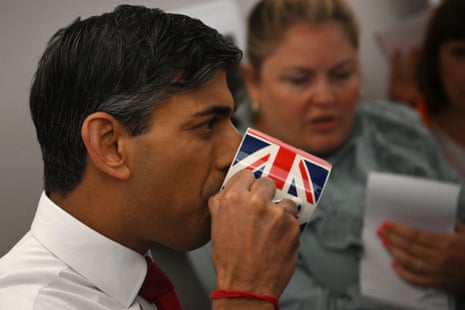
A mug’s game: the politics of Rishi Sunak’s crockery choices
Patriotic teaware was on show from the prime minister this week – the latest round of his mug-based messaging
- UK politics – latest updates
Rishi Sunak appeared on his Instagram feed on Tuesday morning holding a mug emblazoned with the St George’s flag. “Perfect way to start the day,” was the caption: “Happy St George’s Day!”
It is not the only time the prime minister has raised a symbolic piece of teaware. On the same day he appeared en route to Warsaw holding a white mug marked only with the number “10”, presumably a reference to his current home address. Last year one enveloped in a union jack print was his choice for a trip to a Nato summit in Lithuania. Personal branding clearly pays no mind to international airspace.

On other occasions, Sunak has been photographed with a gamut of branded company mugs, from a Selco one on a visit to a builders’ warehouse in London to a National Gas mug on a visit to the Bacton terminals in Norfolk.
What is Sunak saying with these mugs? Because even on site visits, it is a deliberate choice to leave in frame a hot drink receptacle.
“There is an imperative to signal that he is somewhat normal,” says the political journalist, and political mug collector, Stephen Bush, whose most recent acquisition was the “In Liz we Truss” mug that remained very much in stock at the end of the Tory party conference in 2022. “He’s signalling he’s an everyday person by doing something people do every day.”
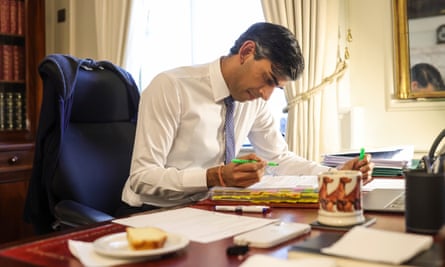
Mugs are also, says Bush, a relatively low-key way of signalling patriotism where an outright flag “would be quite try-hard”. “They’re a good way of being like: ‘Oh yeah, look, I’m a normal guy. I love this country. Look at me drinking from my normal guy cup.’”
Sunak’s mugs have shifted tone. Last year the half-pint mug on his desk, alongside a celebratory slice of cake to mark one year in office, depicted five interlocked red Labradors ; the work of the squarely middle-class brand Emma Bridgewater. As chancellor in 2020 it was a tech-bro-ish £180 smart mug that can set an exact drinking temperature.

Bush thinks he is now trying to signal he is both more “everyman” and, “crucially, more manly”. His newer mugs are perhaps the crockery equivalent of the Timberland boots he wore to call for small-boat crossings of the Channel to be stopped.
He wasn’t the first politician to mobilise teaware. Tony Blair was regularly pictured with a mug , using his casual appearance sipping from it to semaphore the sort of modernising tendencies upon which New Labour set out its stall. Bush notes that before the Blair years, in pictures of politicians meeting in Downing Street, everyone would be using cups and saucers. The mug, he says, was “part of a visual language of early New Labour … we’re modern and we’re different”.
And mugs have long been the site of political slogans and campaigning – almost everyone uses them and it’s a low-stakes way of signalling allegiance. That doesn’t mean they always hit the mark. In 2015, Ed Miliband’s Labour released one promising “Controls on immigration”, which Bush wrote was “condemned as unspeakably naff at best and outright racist at worst”. He collected it as a “great physical reminder of the problems of that election campaign”.
For most British politicians, the idea that even their most ardent supporters would wear a T-shirt declaring that support is a pipe dream – “Tony Blair in 1999 is maybe the last time that you might have been able to wear a T-shirt with a British politician on it without a derogatory slogan and still pull,” says Bush – a mug is a less full-throated mouthpiece.
Boris Johnson is one former prime minister who knows what’s at stake with the wrong mug, having had a single-use plastic one snatched out of his hand by an aide worried about the optics at the Tory party conference in 2019. Michael Gove finally switched to reusables for his walks into Downing Street in 2019, remarkably late for a then-environment secretary supposedly waging war on plastic.
In most cases it is impossible to tell what Sunak’s mug holds, unless he helpfully captions it, as he did on a trip to meet Ben Bradley MP in November last year, saying: “Met up for a cuppa in Worksop yesterday. We both agree that when the East Midlands succeeds, the whole country succeeds”. Tea feels like a safe assumption.
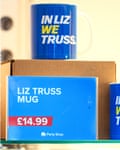
“Tea itself carries a message of bringing people together, calming everybody down,” says the tea expert Jane Pettigrew, who points out that it contains L-theanine, “an amino acid, which actually calms us and de-stresses us”. It is “very much a drink of the people” and, with an election on the horizon,” she says, “he’s trying to win the public vote”.
How could Sunak better leverage the power of the mug to win the heart of the nation? Considering the polls, Bush thinks he would be better off going back to Emma Bridgewater, instead of “trying to convince us all that he’s like some kind of gritty man of the people who uses the word ‘cuppa’”.
- Rishi Sunak
- Politics past
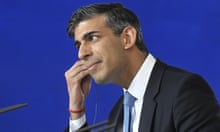
Rishi Sunak struggling to smother frenzy of election rumours

Reports of Sunak’s foul mood in No 10 echo the final days of other dying administrations

Rishi Sunak spent £2m on focus groups for ‘eat out to help out’ scheme

‘I’m a longtime devotee’: Rishi Sunak apologises for wearing Adidas Samba trainers

When Rishi Sunak speaks, the nation shrugs. There’s no coming back from that
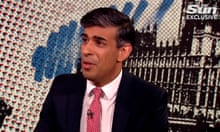
Rishi Sunak insists he did not keep green card to move back to US
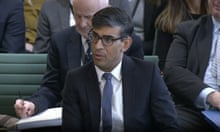
Sunak denies ‘crisis’ in local government funding despite bankruptcy warnings
Rishi sunak on sun tv: even cheeky questions can’t create a sense of fun.
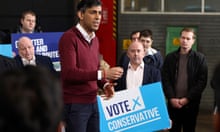
‘This isn’t a game of 4D chess’: Tories braced for bruising local elections
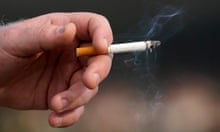
Sunak braces for backlash as smoking ban bill to be introduced in Commons
Most viewed.
News | In Pepperdine visit, former UK Prime Minister…
Share this:.
- Click to share on Facebook (Opens in new window)
- Click to share on Twitter (Opens in new window)
- Click to share on Reddit (Opens in new window)
- Click to print (Opens in new window)
- Investigative Reporting
- Environment
News | In Pepperdine visit, former UK Prime Minister Liz Truss slams ‘destructive ideologies’

Liz Truss, the 56th and shortest-serving prime minister in British history, stopped by Pepperdine University Wednesday to talk about her book on the future of American conservatism and the dangers of “destructive ideologies.”
Focusing on her book “Ten Years to Save the West,” Truss and Jim Gash, president of the Christian university, discussed her evolution as a politician, her rise to the prime ministership and quick downfall.
Truss, 48, joked about her tenure at No. 10 Downing Street: “In historical terms, it’s unmatched,” and blamed a massive and powerful “administrative state” for the failure of her economic program.
“The first thing I want to do with this book is to explain to people what is actually going on in British government,” she said. “What I want to tell people is how big the problem is.”
The book is “a catalog of my frustrations, of the battles I had and why we need system change in order to deliver conservative policies.”
Prime Minister for a little over six weeks in 2022, Truss replaced a scandal-ridden Boris Johnson and was chosen by her Conservative Party to lead. She was succeeded by Rishi Sunak and continues to serve as a member of Parliament.

Truss endorsed Donald Trump for president shortly before the release of her book this month. The book is subtitled “Leading the Revolution Against Globalism, Socialism, and the Liberal Establishment.”
Truss called Trump a conservative, saying “he is somebody who wants to challenge a left-wing establishment and that is exactly what needs to happen.”
She compared politics in Great Britain and the United States, recalling how American friends teased her about government in-fighting and her country’s revolving door of prime ministers.
“And now I’m able to say to them, ‘Look at the House of Representatives, look at what’s going on with your speakers,’ because it’s exactly the same dynamic that’s going on with the House of Representatives and the UK Parliament,” Truss said. “Both of our parties are facing a battle about what the future of conservatism looks like.”
Gash asked the British politician about her views on free speech and the rule of law.
“First of all, I’d love the U.K. to have the First Amendment,” Truss said. “There is more protection in the United States for free speech and that is a fundamentally good thing. Now when that spills over into incitement of violence, that is obviously problematic. I’m very pro free speech, but ordinary citizens in Britain or America have to be allowed to go about their daily lives. And if you can’t go into central London on a Saturday because you’re Jewish or you can’t study at university because you’re Jewish, that is absolutely appalling and disgraceful.”
Truss said conservatism must win in the U.S., if only to combat the power of global administrative states such as the European Convention of Human Rights, the United Nations, World Trade Organization, and the International Monetary Fund, “sucking out the ability of nation states’ self-determination.” These groups have outlived their usefulness, Truss said.
She also warned about the “New Left,” which she said includes advocates for transgender rights, people sounding alarms about climate change, anti-capitalists, and anti-colonialists who are “actively interested in the destruction of our society” and with whom Truss said she could not compromise.
Asked about her political evolution, Truss addressed her time at Oxford University, where she served as president of the Liberal Democrats (“Everyone has a dark past,” she opined.)
“I’ve been called many things, Human Hand Grenade, strutting martinet,” she added.
She also spoke about Brexit, the future of the Tories, and the future of the monarchy, throwing some shade at the Duke and Duchess of Sussex, who stepped back from their royal roles and live in Santa Barbara.
“I think it works,” Truss said of the monarchy. “I don’t think there’s any appetite for a change. King Charles is very respected. Some of the more problematic elements of the royal family have all gone to California.”
“When we look over the pond to America and we see what your system looks like, it’s not obviously superior,” Truss said with a smile, to which Gash replied: “We can possibly say the same about yours.”
Truss told the crowd at the Malibu campus that despite the warnings in her book, she remains optimistic about the future of conservatism in both countries.
“I do believe things can change but what I’m saying to people is a big change is required,” she said.
She advised students to go into politics, “which may sound crazy given how burned my fingers have got from that pursuit.”
“I feel we need people with talent, vision and principles who are unbending, to be prepared to enter the political fray. I think it’s an honorable career.”
- Newsroom Guidelines
- Report an Error
More in News

Crime and Public Safety | Firefighters contain destructive fire on historic Oceanside pier

Holdout states consider expanding Medicaid — with work requirements

He thinks his wife died in an understaffed hospital. Now he’s trying to change the industry

Rural jails turn to community health workers to help the newly released succeed
Your privacy is important to us. We want to better help you understand how and why we use your data. View our Privacy Statement for more details.
We also use cookies on for personalisation, analytics and ads. By continuing to browse you are agreeing to our use of these cookies .
Global News • 26 Apr 2024
Global’s Make Some Noise Hosts Reception at No. 11 Downing Street to Celebrate 10 Years
Celebrating 10 years of impact and highlighting continued need in communities across the uk.
Global’s Make Some Noise – the official charity of Global , the Media & Entertainment group – today hosted a reception at No. 11 Downing Street to celebrate its 10 years of support to charity projects around the UK and to highlight the increasingly challenging circumstances the small charities running these community lifelines are facing.
The charity was joined at Downing Street by key supporters, donors, corporate partners, as well as star presenters from Global ’s radio brands and podcasts, including Nick Ferrari ( LBC ), Jamie Theakston ( Heart ), and Spencer Matthews ( Big Fish podcast) who recently announced a Guinness World Record attempt in aid of Global’s Make Some Noise to run 30 marathons in 30 days across the desert.
“The recent economic climate has forced many more families to look to small charities in their communities for help, and this, at a time when increasing costs are making it more expensive for the charities to deliver their services. They are struggling to meet the growing demand. A recent survey by Global’s Make Some Noise highlights the need to continue to support these community lifelines to ensure that nobody is turned away when they are most in need of help.” LBC Breakfast’s Nick Ferrari on the difficulties small charities across the UK are facing
Every year, Global’s Make Some Noise awards grants to small charities across the country to help fund the vital services they offer. Since its launch in 2014, Global’s Make Some Noise has raised over £35 million , supported over 480 incredible local community projects and made a life changing difference to over 200,000 people across the UK.
“Seeing how many projects we have supported through our charity, Global’s Make Some Noise, over the last 10 years has been simply incredible and a huge amount is down to the amazing efforts of so many Globallers. It was brilliant to be able to celebrate this impact at No. 11 Downing Street and I’m looking forward to another year of fundraising at Global, where we continue to be so grateful for the generous support of our listeners.” Stephen Miron, Global’s Group Chief Executive
In a recent survey of the charities supported by Global’s Make Some Noise , 92% reported an increase in the public’s need for support in the last year, in some cases seeing demand grow by more than 50% . Many of these charities are experiencing growing waiting lists and unprecedented demand for their services, whilst facing increased costs and a downturn in donations. Global’s Make Some Noise has been providing additional emergency grants to protect these charities from closing.
Global’s Make Some Noise supports hundreds of small charities across the UK delivering vital support, with a continued vision that nobody in the UK should face life’s toughest challenges alone. The charity aims to tackle issues such as mental health , poverty and homelessness .
“We’re immensely proud of the life changing difference Global’s Make Some Noise has made to over 200,000 people in the last 10 years.This is all down to the generous and continued support of our incredible partners, fundraisers, volunteers, listeners, and of course, all the amazing Globallers. Right now, millions of people across the UK are facing some of their toughest moments, support really has never been more crucial. We will continue to work tirelessly to raise funds to ensure that these local projects, delivering a vital lifeline of support in the heart of their communities, can continue their amazing work.” Suzanne Ryder-Richardson, Director of Global Goodness at Global
To play your part in helping to keep doors open at these vital small charities, visit: www.makesomenoise.com .
Share this article
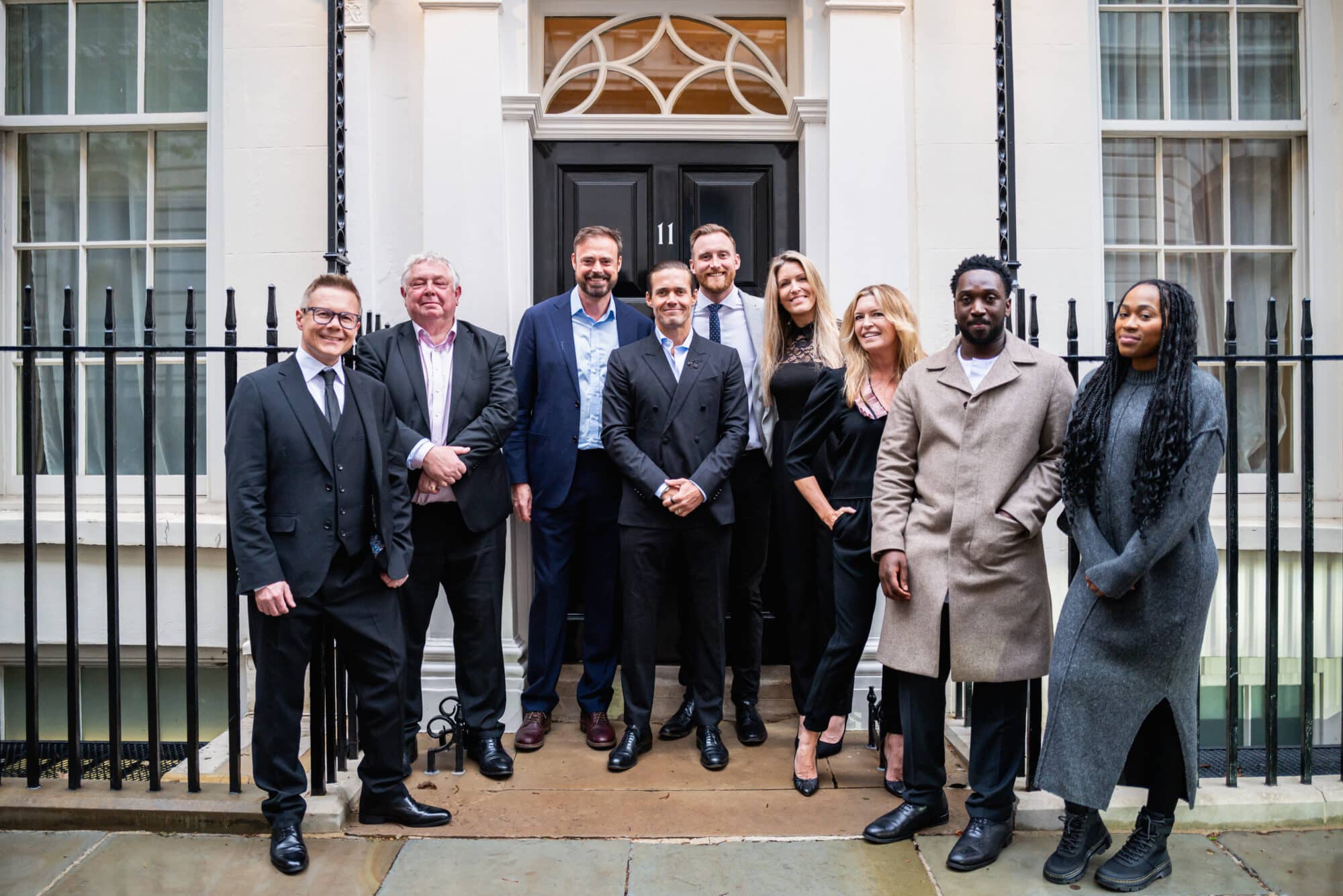
26 April 2024

Capital’s Summertime Ball with Barclaycard is back!
Capital’s Summertime Ball with Barclaycard makes its return this summer Sunday 16th June 2024, Wembley Stadium 2024’s star-studded line-up will be…

Tesco Mobile secures headline sponsorship of The Sports Agents podcast

23 April 2024
Spencer Matthews Embarks on the Great Desert Challenge for Global’s Make Some Noise
Broadcaster and entrepreneur Spencer Matthews is undertaking the challenge of a lifetime this summer as he attempts to run 30 marathons in…

22 April 2024
Deezer and Global sign exclusive ad sales deal

19 April 2024
Global’s Make Some Noise Grants Over £2.6 Million to Support Communities Across the UK
Global’s Make Some Noise – the official charity of Global, the Media & Entertainment group – today announced grants totalling over £2.6…
Working at Global isn’t just a job – it’s an experience.

Couple who poured fake blood on Downing Street gates guilty of criminal damage
Virginia Moffat, 58, and Chris Cole, 60, carried out the offence as part of a protest to demand a ceasefire in the Israel-Hamas war.
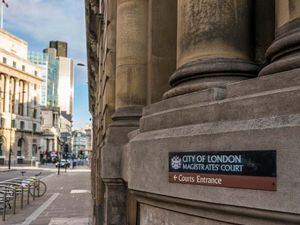
A married couple who poured fake blood and put “bloody handprints” on the gates outside Downing Street have been found guilty of criminal damage.
The couple, from Dorset, appeared at the City of London Magistrates’ Court on Thursday, where they were found guilty by Deputy District Judge Patricia Evans.
The Christian protesters had claimed the damage was “minimal and insignificant”, the court heard.
“Members of the public were also unable to view Downing Street.
“I conclude in my judgment the damage was significant and I find the defendants guilty”.
Because of prior convictions, Cole was handed a fine of £692 and ordered to pay the court £656.34.
Moffatt, who had no prior convictions, avoided a fine but was ordered to pay the court £405.34.
According to an earlier statement released by campaign group FigTree, the pair said the Government had “blood on its hands” after refusing to demand Israel end its bombing of Gaza.
They also described it as “a massacre of biblical proportions”.
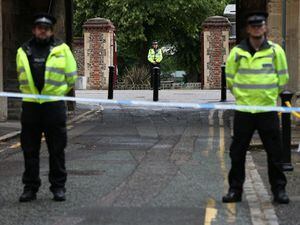
St George smashes record for most expensive Guernsey property News | 8 hours ago
P&R vetoes housing on Frossard House parking News | 8 hours ago
GP11’s suspension ‘not the cure-all for housing problem’ News | 14 hours ago
A rekindled love of heritage leads islander to museums role News | 14 hours ago
‘Get building’ call to developers after vote to suspend GP11 News | 14 hours ago

Peace Through Strength? When Nixon Went to Moscow

- Video: Global Warming Lorem Ipsum Dolor Sit ...
- Article: Global Warming Lorem Ipsum Dolor Sit ...
- Entry: Global Warming Lorem Ipsum Dolor Sit ...
On May 22, 1972, Richard Nixon became the first American president to visit Moscow, the capital and largest city of what was then the Union of Soviet Socialist Republics. The nine-day summit came on the heels of Nixon’s more famous visit to China earlier in the year, when he and Chairman Mao reinitiated Chinese-American relations and began a long process of reintegrating the two societies’ political, cultural, and economic institutions. (Nixon, in 1959, visited Moscow as vice-president, something I’ll write about it July, so stay tuned!)
So why did Nixon, one of the most ardent anti-Communists in American politics during the late 1960s and early 1970s, go to Moscow at the height of the Cold War? How was he able to even pull it off? The counterintuitive answer is that it was because he was so hawkish. Only Nixon could go to the Soviet Union (and China earlier in 1972).
Nixon’s anti-Communist credentials were so sound that he could spend political capital making inroads with Communist enemies. His actions were viewed as safe by the American electorate because, for better or worse, the public saw Nixon as somebody who would not betray American values at the negotiating table with the Soviets. Nixon’s hawkishness provided moral cover for America’s withdrawal from Vietnam, and its peaceful overtures to the two most powerful and aggressively anti-capitalist regimes in the world (China and the USSR).
This dynamic plays out in a number of examples in the world today, too. Donald Trump comes to mind, of course, but so does Narendra Modi’s populist regime in India (relations between India and Pakistan have never been so peaceful). Xi Jinping’s China can also be viewed in this light. At home, Chairman Xi is a strident nationalist, but abroad, he and his policymakers have been vigorously building multilateral relationships with Asia, Africa, Latin America, Europe, and even the United States using that hawkishness at home as one of its diplomatic cards at the negotiating table. In the past, Otto von Bismarck’s German federation achieved peace on the European continent through strength.
Anecdotally, Republicans from California tend to be a bit more hawkish than their national counterparts. Nixon and Reagan come to mind, but so do many of California’s GOP members in the House of Representatives today. This is due, in part, to the fact that California is so far to the left that GOP operatives have to distinguish their differences with Democrats in a more pronounced manner. California’s Democrats are, for better or worse, viewed as the standard-bearers for all things left-wing today: big government, open immigration (whether legal or not), and world peace. This is a caricature, of course, since people like Nancy Pelosi and Babs Boxer have easily traceable hawkish records on policies like foreign affairs, but that’s just the nature of electoral politics in one-party states and of the narrative of our media establishment. California’s Republicans, outnumbered and always under attack, have no other option but to oppose instinctively their counterparts’ public aura. If the Democrats there are in favor of peace with communists (even if their voting record says otherwise), the Republicans have to go to their constituents and say they are against it.
Nixon was the first president to visit Moscow. FDR had visited the Soviet Union in 1945, but the conference he attended, along with Winston Churchill and Josef Stalin, was held at Yalta, a resort town in present-day Crimea. The Moscow Summit itself was rather interesting, too. Nixon signed numerous accords with the Soviet Union while there, but he did so with numerous heads of Soviet bureaucracies rather than solely with Brezhnev. What this can tell us is that the Soviet Union was far more decentralized in 1972 than many hawkish (and ideological) observers claimed.
After Stalin’s butcherous rein, Khrushchev came to power and tried to eliminate the brutal elements of Stalin’s regime while simultaneously wielding the power Stalin had held. But power thrives on fear and violence, and reformers took advantage of Khrushchev’s less brutal approach to institute a number of reforms in governance, including the dismantling of the General Secretary’s omnipotent position in the USSR’s political hierarchy. What emerged by the time Khrushchev’s successor, Brezhnev, came to govern was a much more decentralized political structure that sought to realize a true union of Soviet socialist republics. The fact that this realization still failed to replace capitalism as a superior producer of goods, services, and human freedom should not shroud the fact that reform was achieved in the Soviet Union. Indeed, the fact that hard-fought reform in Soviet civil and political life failed to achieve any of the USSR’s economic goals is a strength when pointing out socialism’s long list of failures.
Incidentally, one of the reasons I didn’t include Gorbachev in the l ist of dictators who “gave up” power is because he wasn’t a dictator. Gorbachev inherited a political system that was decentralized and dedicated to representativeness. If anything, the executive branch of the USSR was more decentralized than its American counterpart, a fact illustrated best by Nixon having to sign accords with a number of high-ranking Soviet officials.
So what can all this history teach us about today’s world? I look at hawks and doves. Hawks may make boorish claims, and they may say stupid things, but maybe, just maybe, we should give the hawks a chance.
Brandon Christensen is a weekly columnist at RealClearHistory and a contributor to the site's Historiat blog. He's also a member of the Notes On Liberty blogging consortium and currently writes from Texas.


Oxford University Press's Academic Insights for the Thinking World
The History of the World: Nixon visits Moscow
The history of the world: sixth edition.
- May 22 nd 2013
22 May 1972 The following is a brief extract from The History of the World: Sixth Edition by J.M. Roberts and O.A. Westad.
In October 1971 the UN General Assembly had recognized the People’s Republic as the only legitimate representative of China in the United Nations, and expelled the representative of Taiwan. This was not an outcome the United States had anticipated until the crucial vote was taken. The following February, there took place a visit by Nixon to China that was the first visit ever made by an American president to mainland Asia, and one he described as an attempt to bridge ‘sixteen thousand miles and twenty-two years of hostility.’

When Nixon followed his Chinese trip by becoming also the first American president to visit Moscow (in May 1972), and this was followed by an interim agreement on arms limitation – the first of its kind – it seemed that another important change had come about. The stark, polarized simplicities of the Cold War were blurring, however doubtful the future might be.
Reprinted from THE HISTORY OF THE WORLD: Sixth Edition by J.M. Roberts and O.A. Westad with permission from Oxford University Press, Inc. Copyright © 2013 by O.A. Westad.
J. M. Roberts CBE died in 2003. He was Warden at Merton College, Oxford University, until his retirement and is widely considered one of the leading historians of his era. He is also renowned as the author and presenter of the BBC TV series ‘The Triumph of the West’ (1985). Odd Arne Westad edited the sixth edition of The History of the World . He is Professor of International History at the London School of Economics. He has published fifteen books on modern and contemporary international history, among them ‘The Global Cold War,’ which won the Bancroft Prize.
Subscribe to the OUPblog via email or RSS . Subscribe to only history articles on the OUPblog via email or RSS .
- This Day in History
Our Privacy Policy sets out how Oxford University Press handles your personal information, and your rights to object to your personal information being used for marketing to you or being processed as part of our business activities.
We will only use your personal information to register you for OUPblog articles.
Or subscribe to articles in the subject area by email or RSS
Related posts:

Recent Comments
There are currently no comments.
- Find a Library
- Browse Collections
- The Moscow Option
ebook ∣ An Alternative Second World War
By david downing.
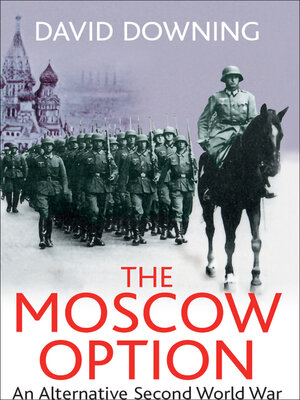
Add Book To Favorites
Is this your library?
Sign up to save your library.
With an OverDrive account, you can save your favorite libraries for at-a-glance information about availability. Find out more about OverDrive accounts.
9781848327214
David Downing
Pen & Sword Books
05 August 2013
Find this title in Libby, the library reading app by OverDrive.

Search for a digital library with this title
Title found at these libraries:.

IMAGES
COMMENTS
This room has seen some truly monumental moments in British political history. Simon Schama's Tour of Downing Street. Pt2: The Cabinet Room (2015-06-15) by 10 Downing Street 10 Downing Street. On 7th February 1991, a terrorist mortar bomb exploded in the garden of Number 10, just a few metres from the Cabinet Room.
Larry, Chief Mouser to the Cabinet Office. Prime ministers come and go, but one resident of 10 Downing Street has no plans to leave any time soon. Larry the cat, whose official title is Chief Mouser, has been living at 10 Downing Street since February 2011. He has now seen two PMs come and go.
10 Downing Street, the locale of British prime ministers since 1735, vies with the White House as being the most important political building anywhere in the world in the modern era. Behind its ...
Visiting 10 Downing Street. Unfortunately for tourists, 10 Downing Street (as well as the majority of Downing Street itself) is blocked off by a black gate and heavily patrolled by police at all times. (However, visitors can now take a look at the inside of 10 Downing Street by taking a 360-degree virtual tour on 10 Downing Street's official ...
Former US president Barack Obama. popped into Downing Street on Monday for private talks with Rishi Sunak. Mr Obama, who served in the White House from 2009 to 2017, smiled and waved at members of the press before he entered No 10 shortly after 3pm. His visit was understood to be a courtesy call as he was in London.
No 10 Downing Street. The official office of British leaders since 1735, when King George II presented No 10 to 'First Lord of the Treasury' Robert Walpole, this has also been the prime minister's London residence since the late 19th century. For such a famous address, No 10 is a small-looking Georgian building on a plain-looking street ...
10 Downing Street is probably the most famous address in Britain, if not the world. It is the home and office of the British Prime Minister, and it is here that the leader welcomes foreign diplomats a ... Visit A City is all about the fun of planning the details of your trip. We believe that your own personal trip requires you to have your own ...
10 Downing Street in London is the official residence and office of the Prime Minister of the United Kingdom.. Colloquially known as Number 10, the building is in Downing Street, just off Whitehall, in the City of Westminster, London.It is over 300 years old, is Grade I listed, and contains approximately 100 rooms. A private residence for the prime minister occupies the third floor and there ...
The half-acre garden and terrace wraps around Number 10 and Number 11. Margaret Thatcher was particularly fond of the plants and was famously photographed picking tulips in 1985. On a return visit ...
Downing Street is a street in Westminster in London that houses the official residences and offices of the Prime Minister of the United Kingdom and the Chancellor of the Exchequer.Situated off Whitehall, it is 200 metres (660 ft) long, and a few minutes' walk from the Houses of Parliament.Downing Street was built in the 1680s by Sir George Downing.. For more than three hundred years, it has ...
10 Downing Street 360 Virtual Tour. ENTER FULLSCREEN. EXIT FULLSCREEN.
About 10 Downing Street. 10 Downing Street in London is the traditional residence of the British Prime Minister, and in its 300-year-old history has witnessed some of the country's most important political decisions. From Winston Churchill to Margaret Thatcher, a host of Britain's leaders have walked through its iconic black door, and today ...
By October 1940, the intense bombing period known as the Blitz began. On 14 October, a huge bomb fell on Treasury Green near Downing Street, damaging the Number 10 kitchen and state rooms, and ...
10 Downing Street today. The current tenant of 10 Downing Street is the Chancellor of the Exchequer, Rishi Sunak. It has been common practice in recent decades for the Prime Minister to live at Number 11, as its residential apartment is larger, and for the Chancellor to live at Number 10.
The 44th president raised eyebrows Monday when he popped by No. 10 Downing Street for a meeting with British Prime Minister Rishi Sunak. Obama, 62, was tight-lipped about the reason for his ...
Larry the Cat is seen in front of No. 10 Downing St. on July 5, 2022. He has now been on the job as Chief Mouser at the British prime minister's official residence for a dozen years.
London Open Gardens is delighted to announce that the garden at Number 10 Downing Street will be opening via a public ballot during London Open Gardens 2024. There will be two tours on Saturday 8 June 2024 at 11.30am and 1.30pm. 24 places are available on each tour, open to visitors aged 12 and over. Due to high demand, this event can only be ...
Former White House communications director Anthony Scaramucci has opened up on why Barack Obama paid a surprise visit to Downing Street. The former US president made the unexpected visit to No.10 ...
O n Monday, former U.S. President Barack Obama made an unanticipated visit to No. 10 Downing Street for a meeting with British Prime Minister Rishi Sunak. Despite the British government's ...
Photograph: Simon Dawson/No 10 Downing Street Mugs are also, says Bush, a relatively low-key way of signalling patriotism where an outright flag "would be quite try-hard".
Truss, 48, joked about her tenure at No. 10 Downing Street: "In historical terms, it's unmatched," and blamed a massive and powerful "administrative state" for the failure of her ...
Global's Make Some Noise - the official charity of Global, the Media & Entertainment group - today hosted a reception at No. 11 Downing Street to celebrate its 10 years of support to charity projects around the UK and to highlight the increasingly challenging circumstances the small charities running these community lifelines are facing.
A married couple who poured fake blood and put "bloody handprints" on the gates outside Downing Street have been found guilty of criminal damage. Virginia Moffat, 58, and Chris Cole, 60, carried out the offence as part of a protest to demand a ceasefire in the Israel-Hamas war.
When Nixon Went to Moscow. On May 22, 1972, Richard Nixon became the first American president to visit Moscow, the capital and largest city of what was then the Union of Soviet Socialist Republics. The nine-day summit came on the heels of Nixon's more famous visit to China earlier in the year, when he and Chairman Mao reinitiated Chinese ...
22 May 1972. The following is a brief extract from The History of the World: Sixth Edition by J.M. Roberts and O.A. Westad.. In October 1971 the UN General Assembly had recognized the People's Republic as the only legitimate representative of China in the United Nations, and expelled the representative of Taiwan.
Israel's air force commander will lead a delegation to Moscow to share the military's findings on the Syrian downing of a Russian warplane following Israeli air strikes, the army said Wednesday. The delegation, led by Major General Amikam Norkin, would on Thursday "present the situation report... regarding all aspects" of the incident, the army ...
By David Downing. Read a Sample. Sign up to save your library. With an OverDrive account, you can save your favorite libraries for at-a-glance information about availability. Find out more about OverDrive accounts. Save Not today. Format. ebook. ISBN. 9781848327214. Author. David Downing. Publisher. Pen & Sword Books ...